English
Türkçe bölüm için lütfen buraya tıklayın.
Hello everyone!!!
I hope you are well or are trying to be well. I am fine. I've been a bit out of my routine lately and I'm here to change that, so we're going to continue our old routine of Mondays From All Over Türkiye series. That would be a great start, wouldn't it?
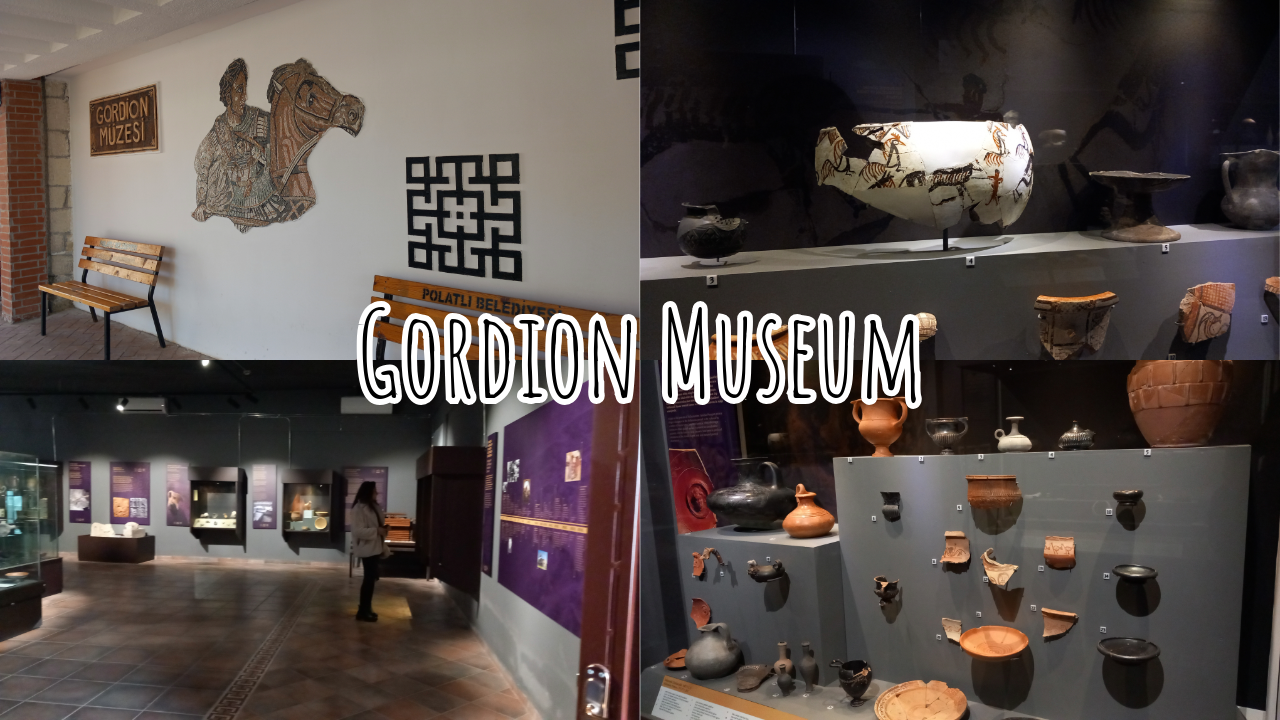
In the thirty-third part of our trip to Türkiye, we went to Gordion. You know, the place where Alexander the Great cut the Gordian knot. Now we are entering this museum, which is located just opposite the Midas Mound and where the historical artifacts discovered in Yassıhöyük and many more are housed.
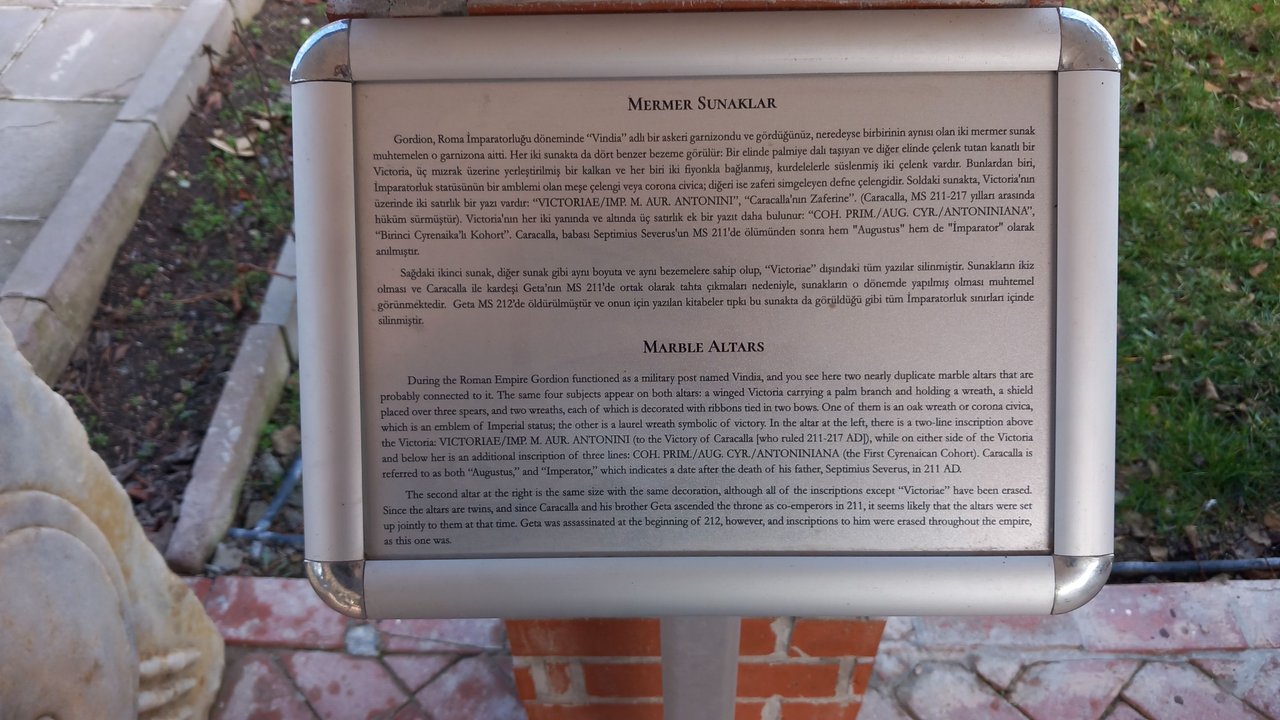
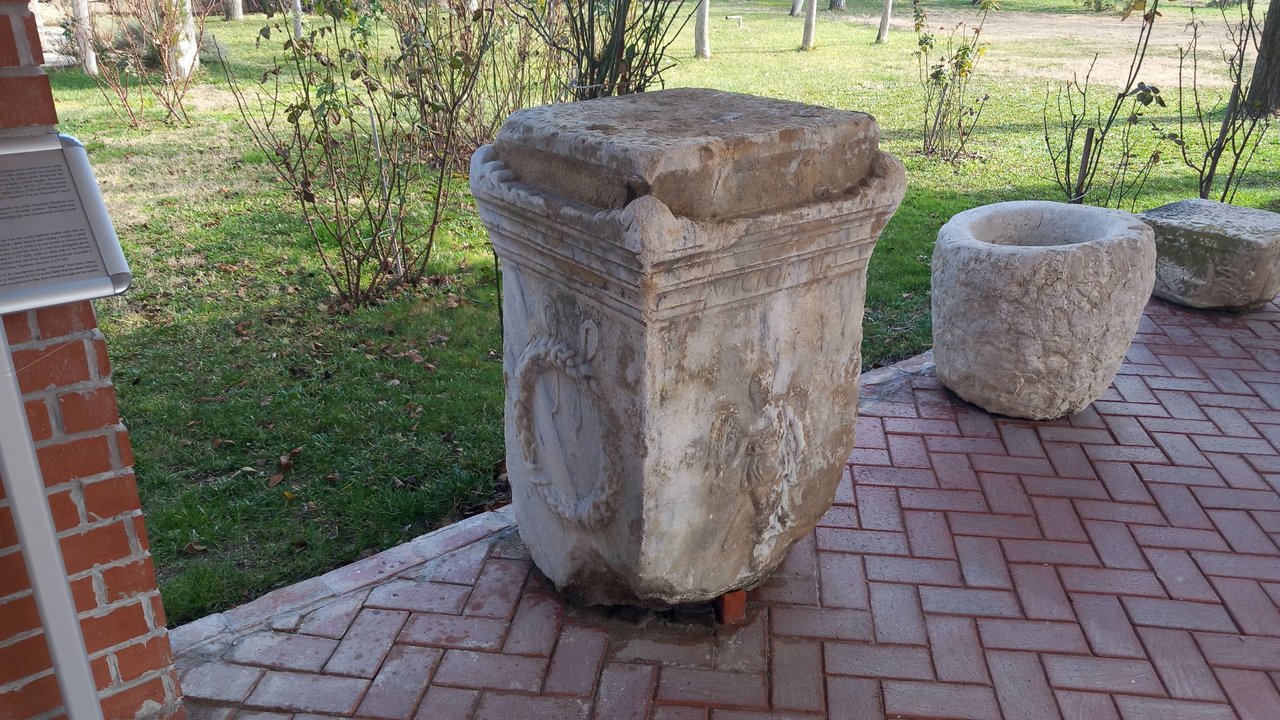
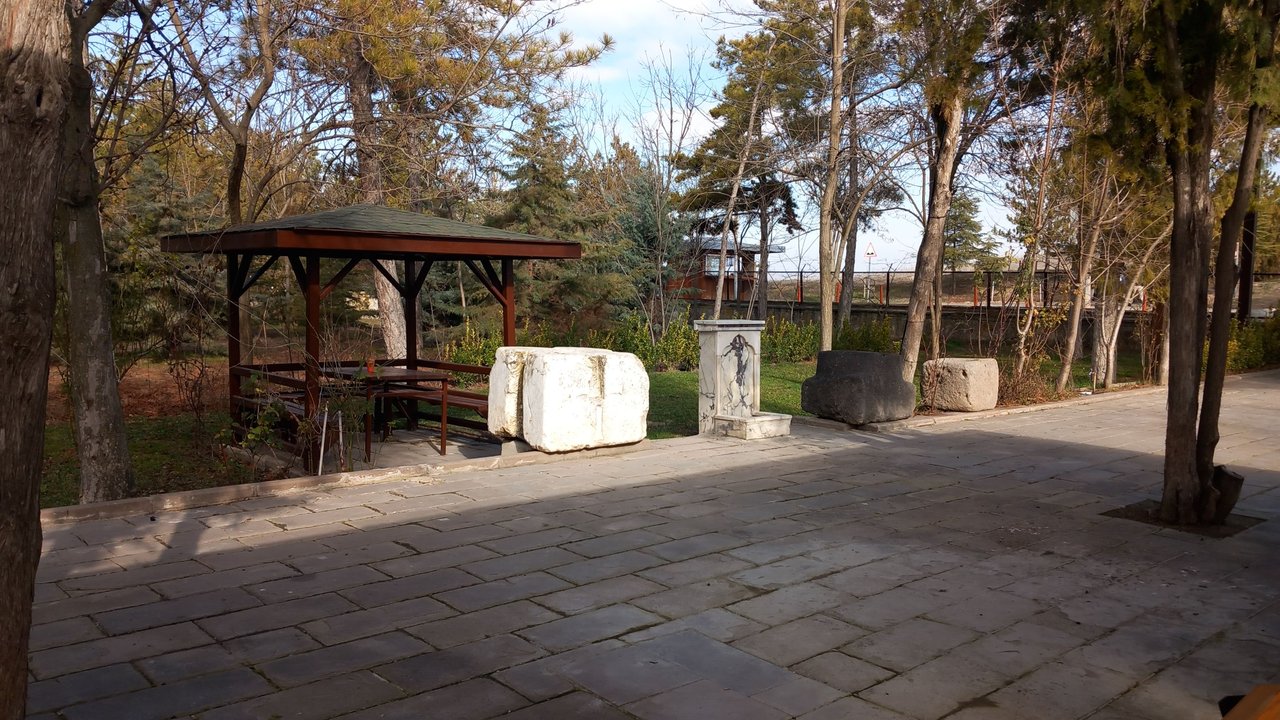
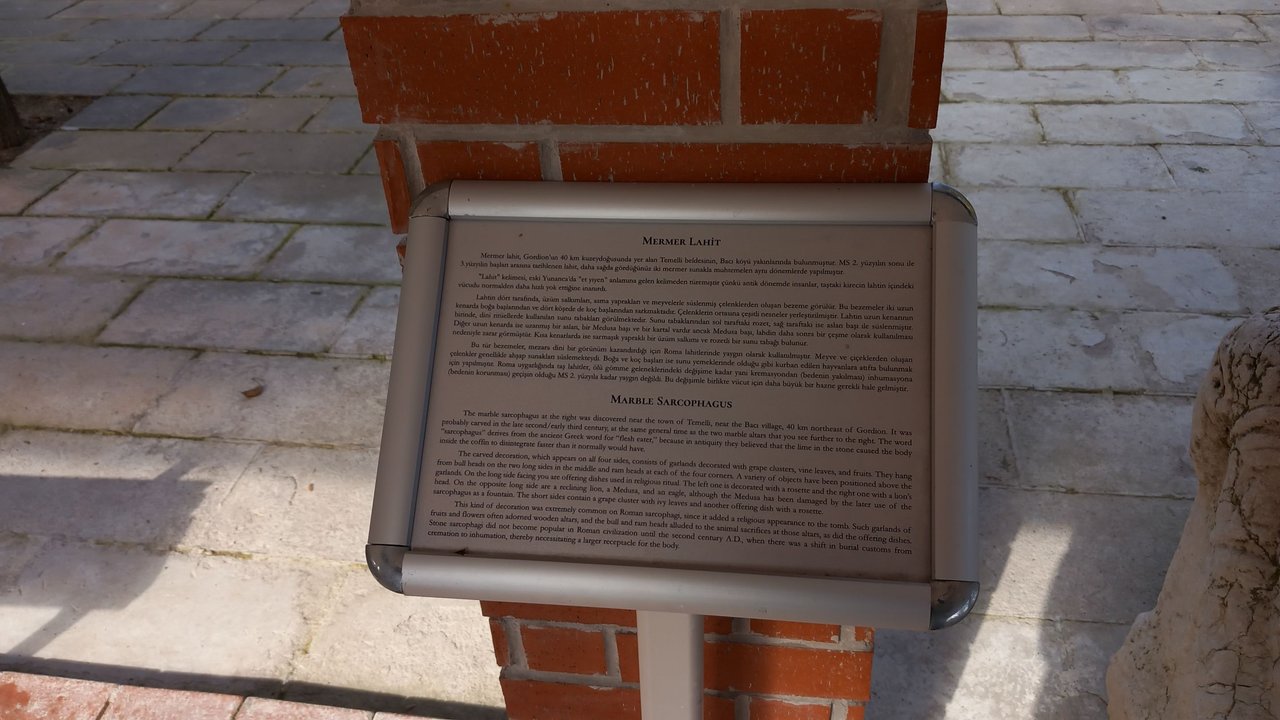
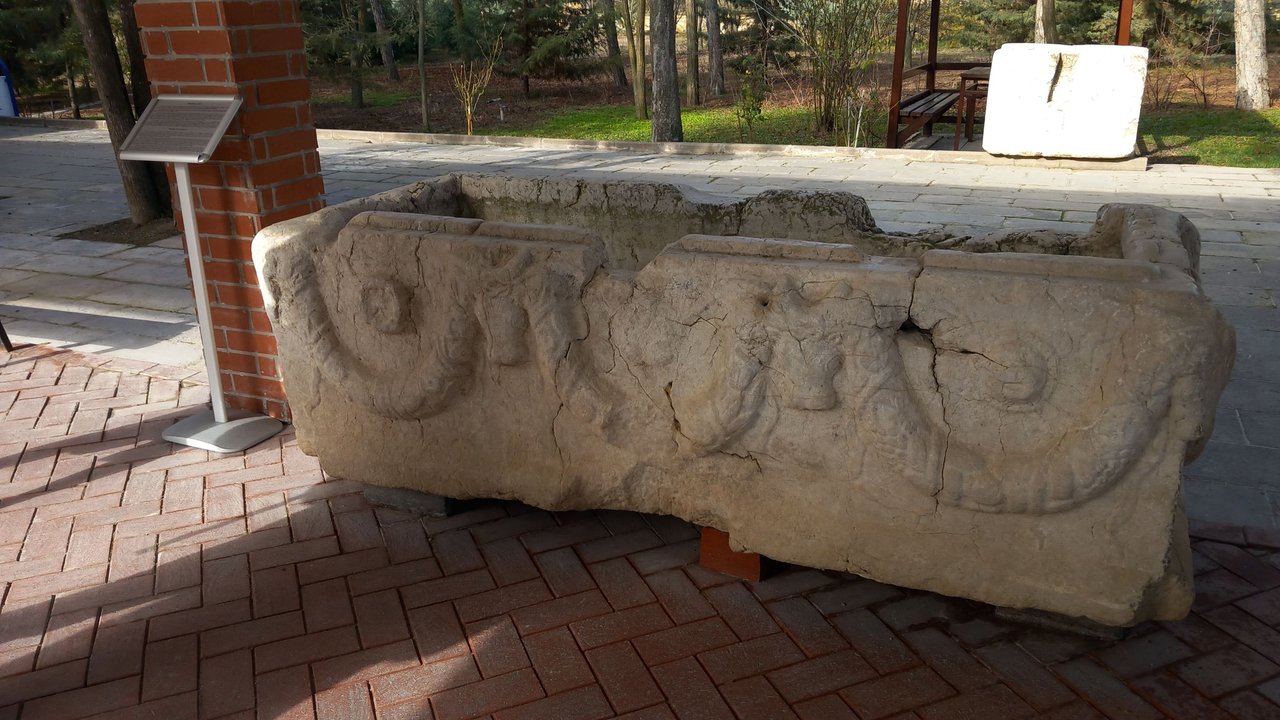
The entrance to the museum seems to be quite calm. There are a few altar stones and marble sarcophagi outside that are not easily affected by the weather. Actually, I don't think they should be outside either, but of course it is not for me to say anything unfortunately. All I can do is feel sorry for these historical heritages because we know that Ankara is not a place with such good weather conditions.
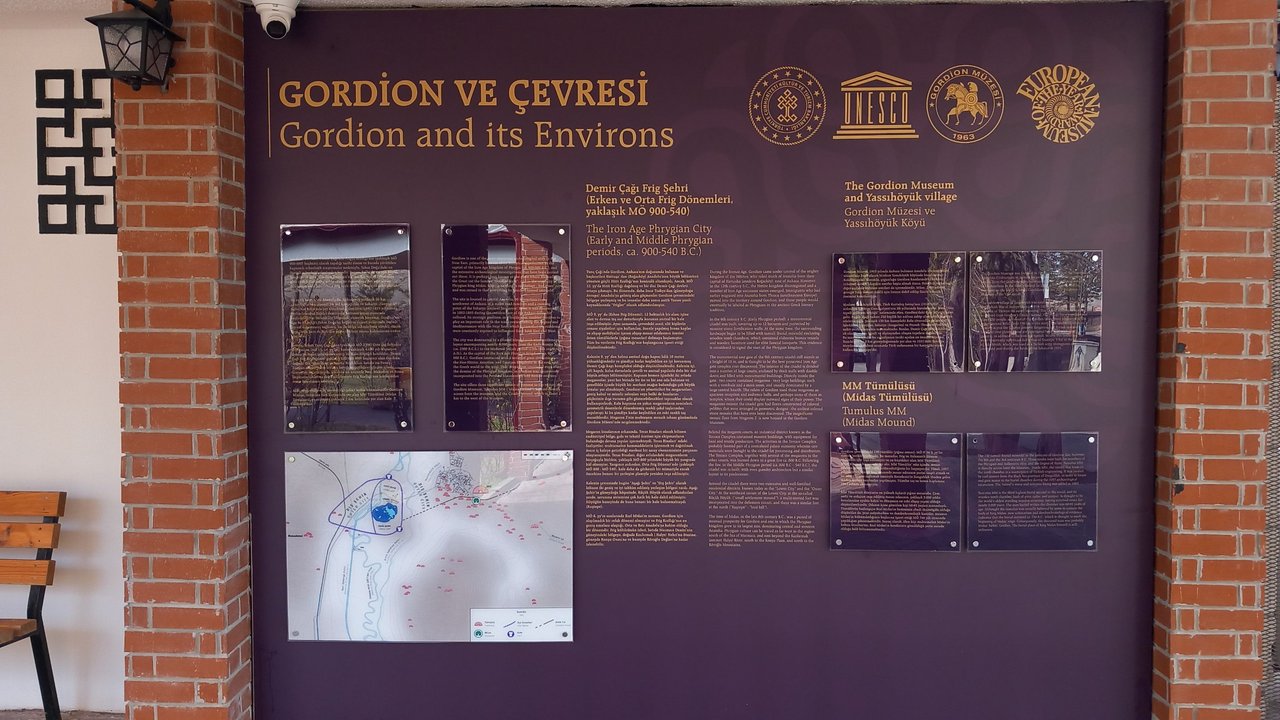
The museum has made a chronological chart of the area where Gordion is located, and the museum is organized in this way. They also present us with artifacts from similar times that were found in nearby places but not exhibited here. That's why there are so many small but detailed things in the museum.
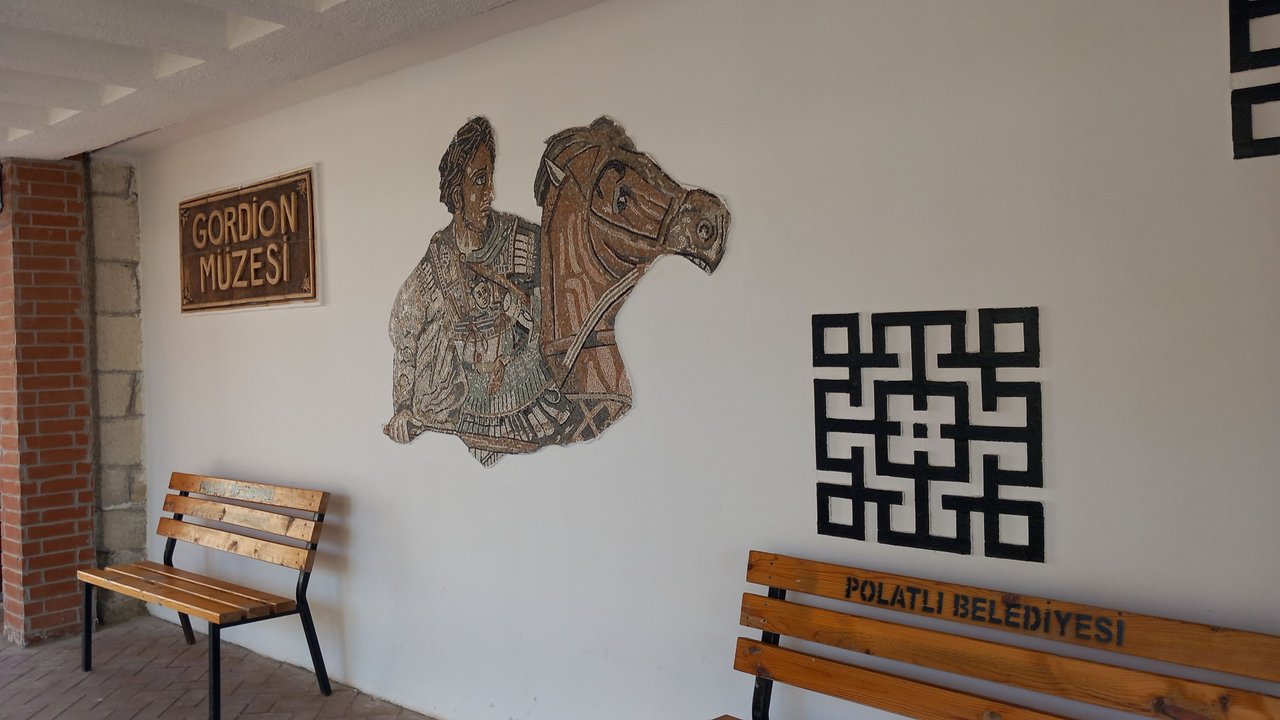
There is also a copy of this mosaic of Alexander the Great with his horse here, but I think this mosaic, at least a copy, should be found. After all, the traces left by Alexander are not easy to erase.

The museum is very cleanly organized. There is no confusion and you have no difficulty in understanding each piece individually. In fact, I'll put a closer photo of it below, in the first room you enter there is a chronological table.
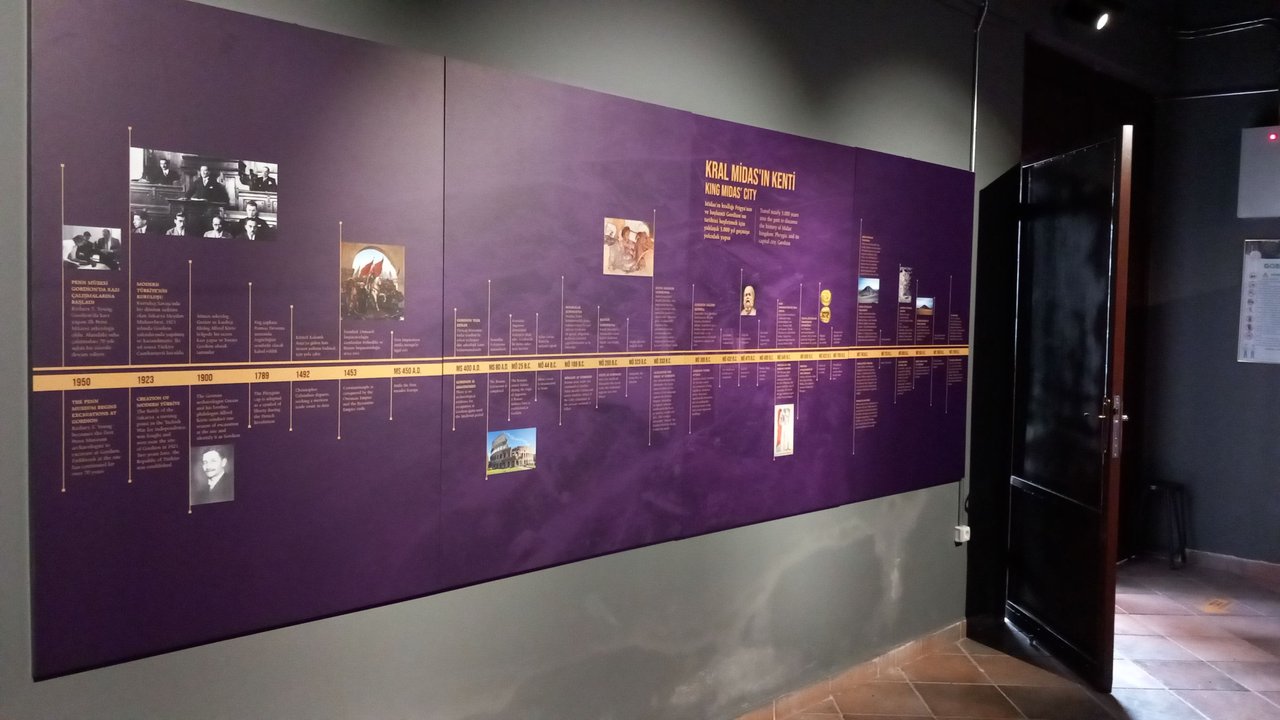


There are also texts about how and where the excavations started, and they are very realistic because everything is documented in detail. When you read them, it's more like you're reading about what really happened rather than just seeing someone writing a story.
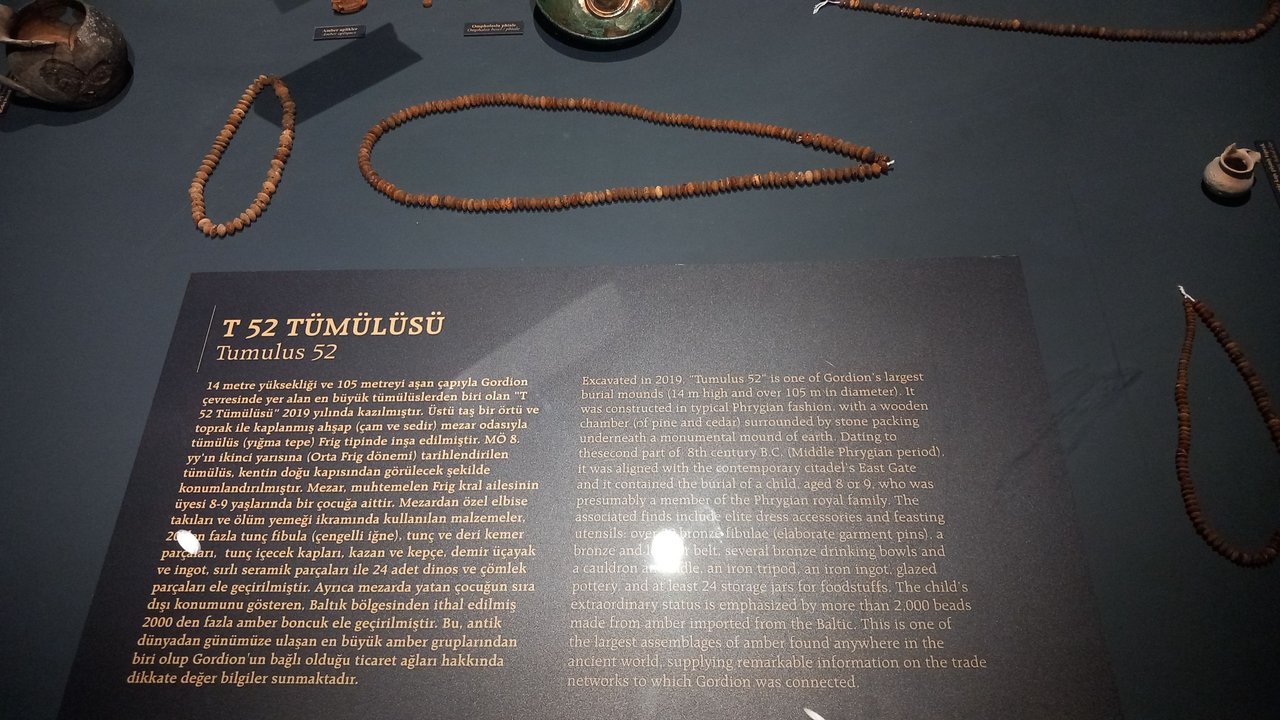

Even though I found it difficult to take photos of artifacts protected by glass, sometimes the photos looked very good. Like the photo on the right. For some reason, I liked this photo very much. Here, the items found in the fifty-second of the nearly 100 mounds I mentioned in my previous article are exhibited.
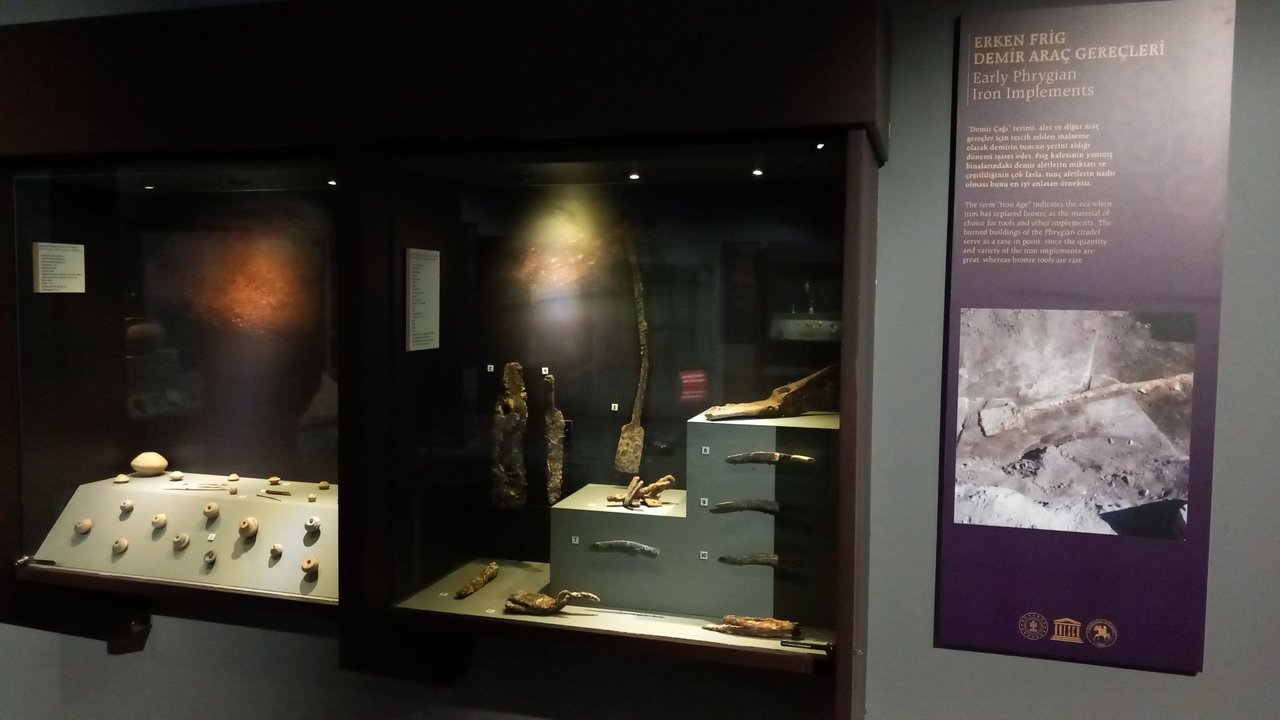
As you can read from the information board on the right side of the photo, there are iron tools from the Early Phrygian period here. Actually, there are one or two things I like about the Phrygians. Fibula and flutes. I like the Phrygians very much because I associate them with my own personality.

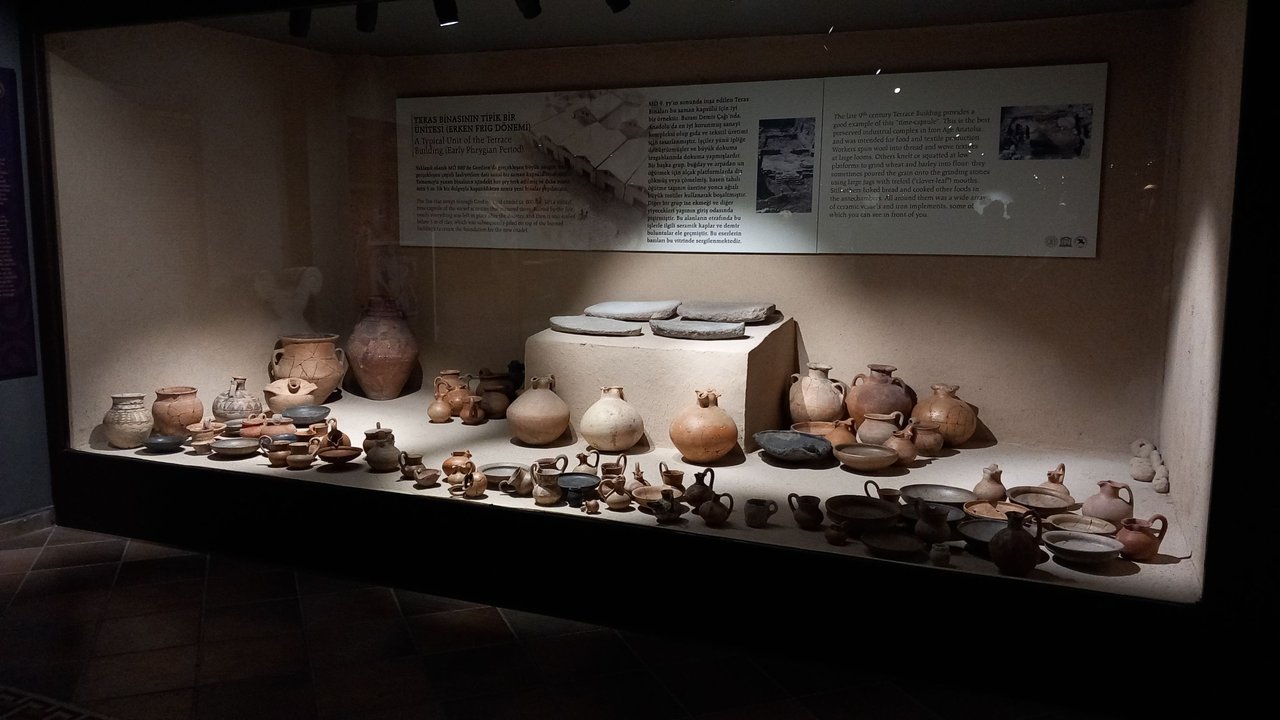
It is quite easy to understand from the colours and content that you have changed rooms. Even now, even if I cannot remember the museum very clearly, it is not difficult to think that I am in a different room with the surrounding artefacts and colour themes. The planning and the creation of the museum was quite successful.
Due to a great fire in 800 BC, everything in the houses in this section remained the same. It seems that no one came and collected the rest because if you look at the photo carefully, you can easily see that the artefacts here are a little more ‘intact’ than the others.
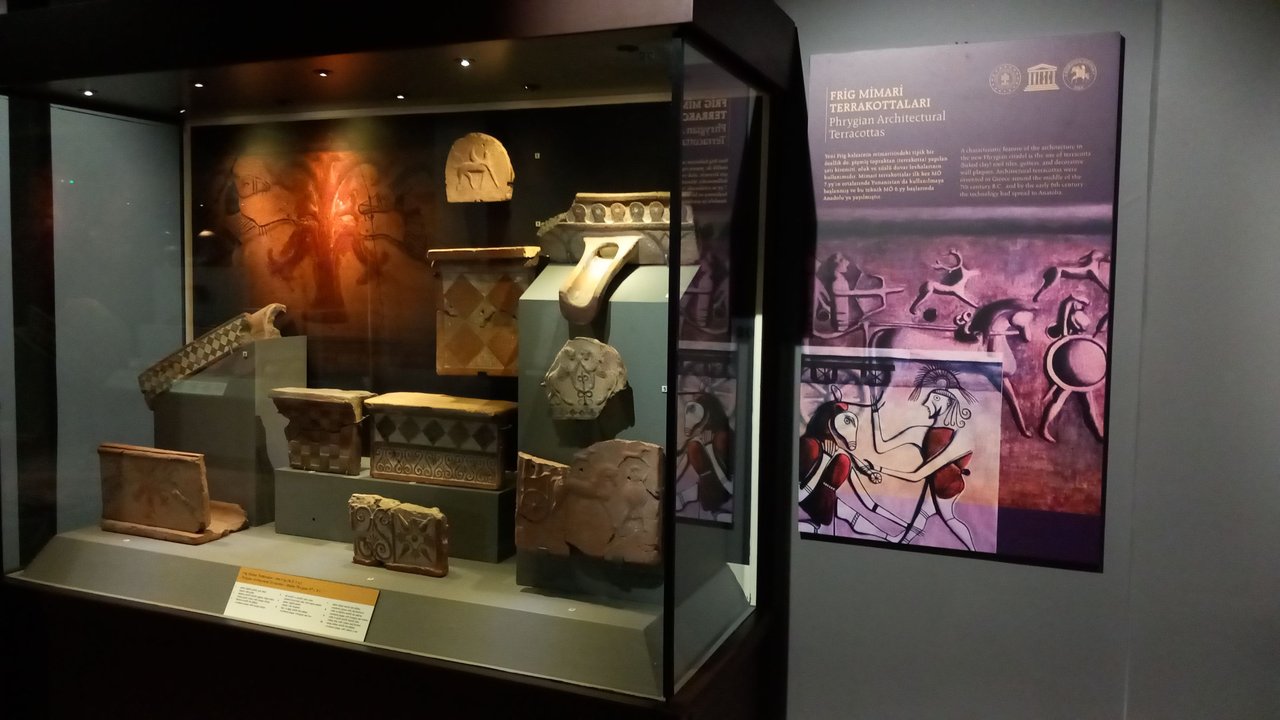
Did I tell you before that the Phrygians were also great in architecture? If not, I'm telling you now because can you look at the terracottas? We're talking about a time like the 6th century BC, and even these tiny examples of architectural artefacts at some point give us an idea of what a house or an administrative building might look like.
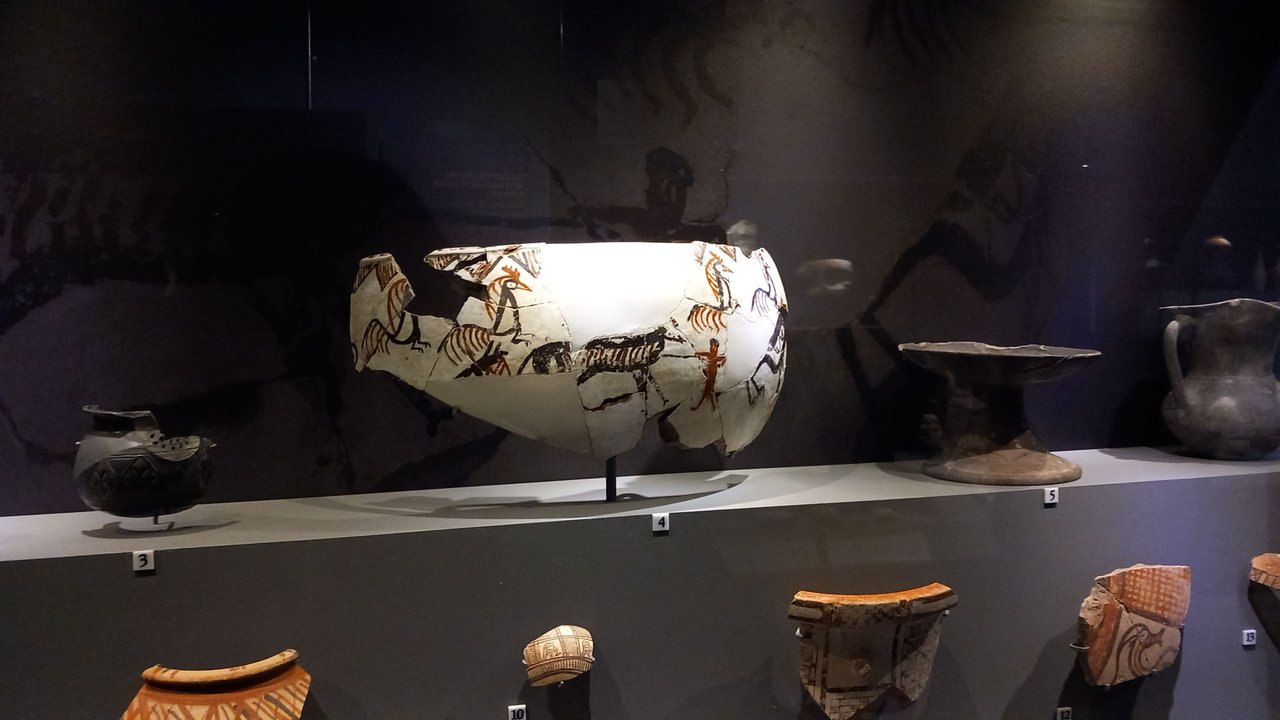
The embroidery is like the apple of your eye. It is very detailed and reflects the period. I wish we had access to this work in its original condition. I would like to take it home with me, as I like this kind of thing at home. I think I'd better find a similar vase.

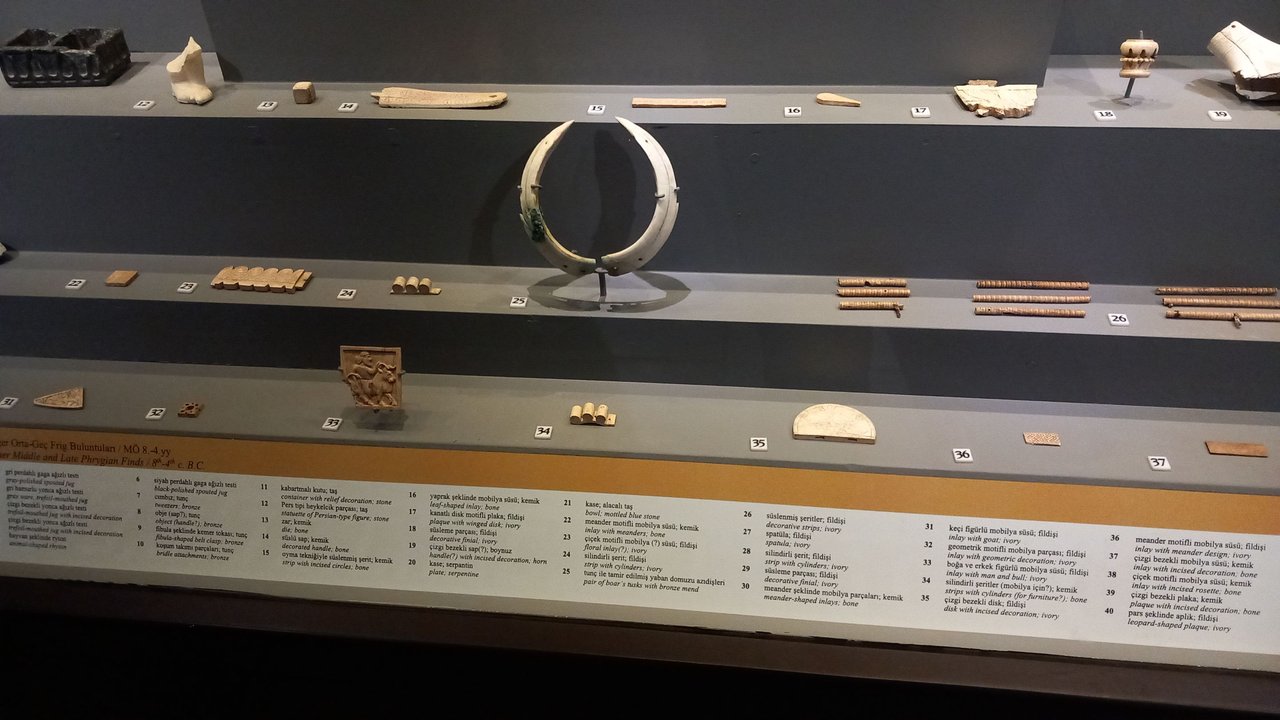
After this section, we proceed to the section belonging to the Early/Middle Phrygian Period. Although the tools gradually lose their famous Phrygian traces, in my opinion, we start to see different things as technology advances. What do you think it means to repair the tusks of a wild boar with bronze? Why would you need to do such a thing? Do you think it was used as a daily tool or as an ornament?
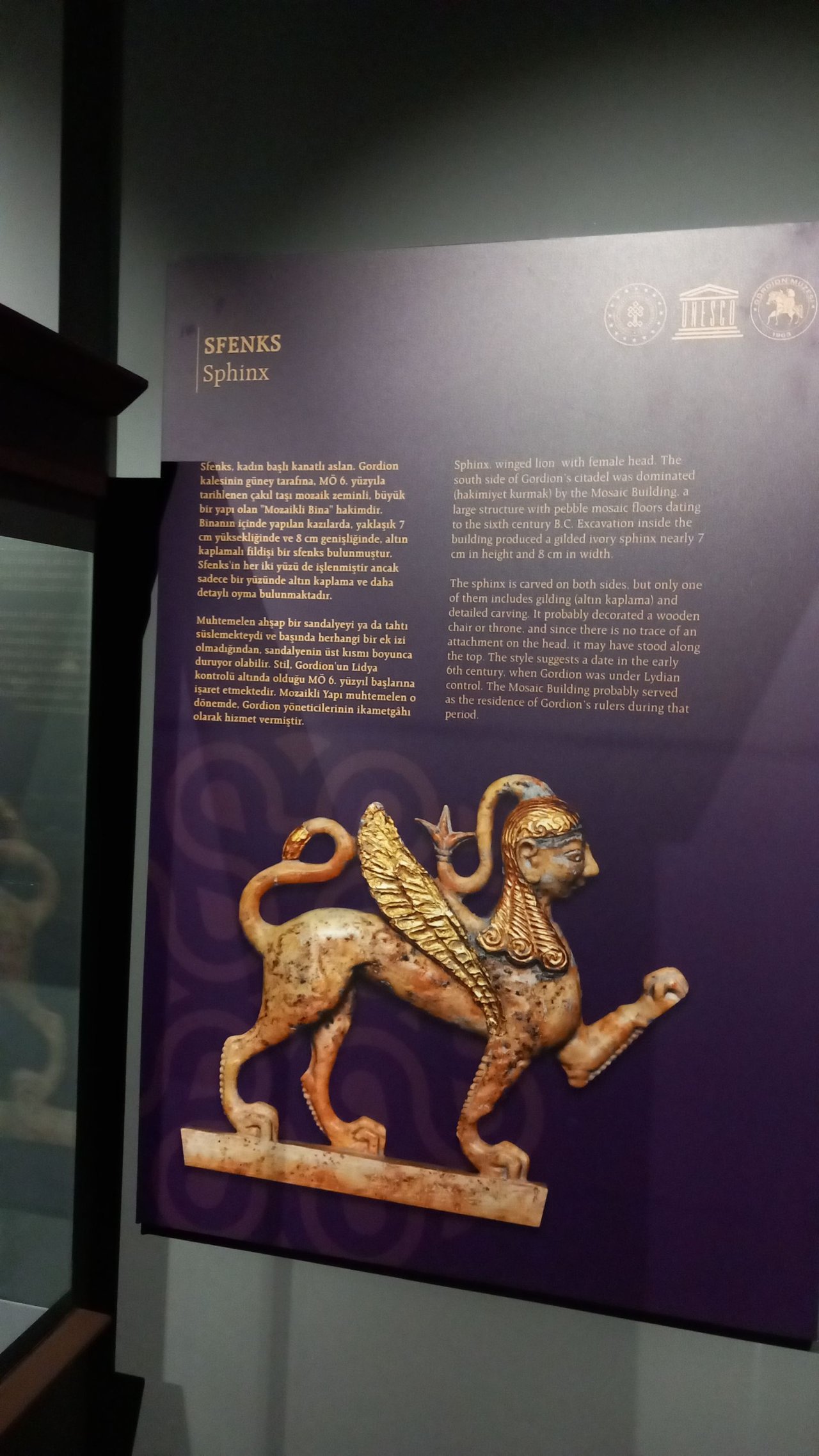
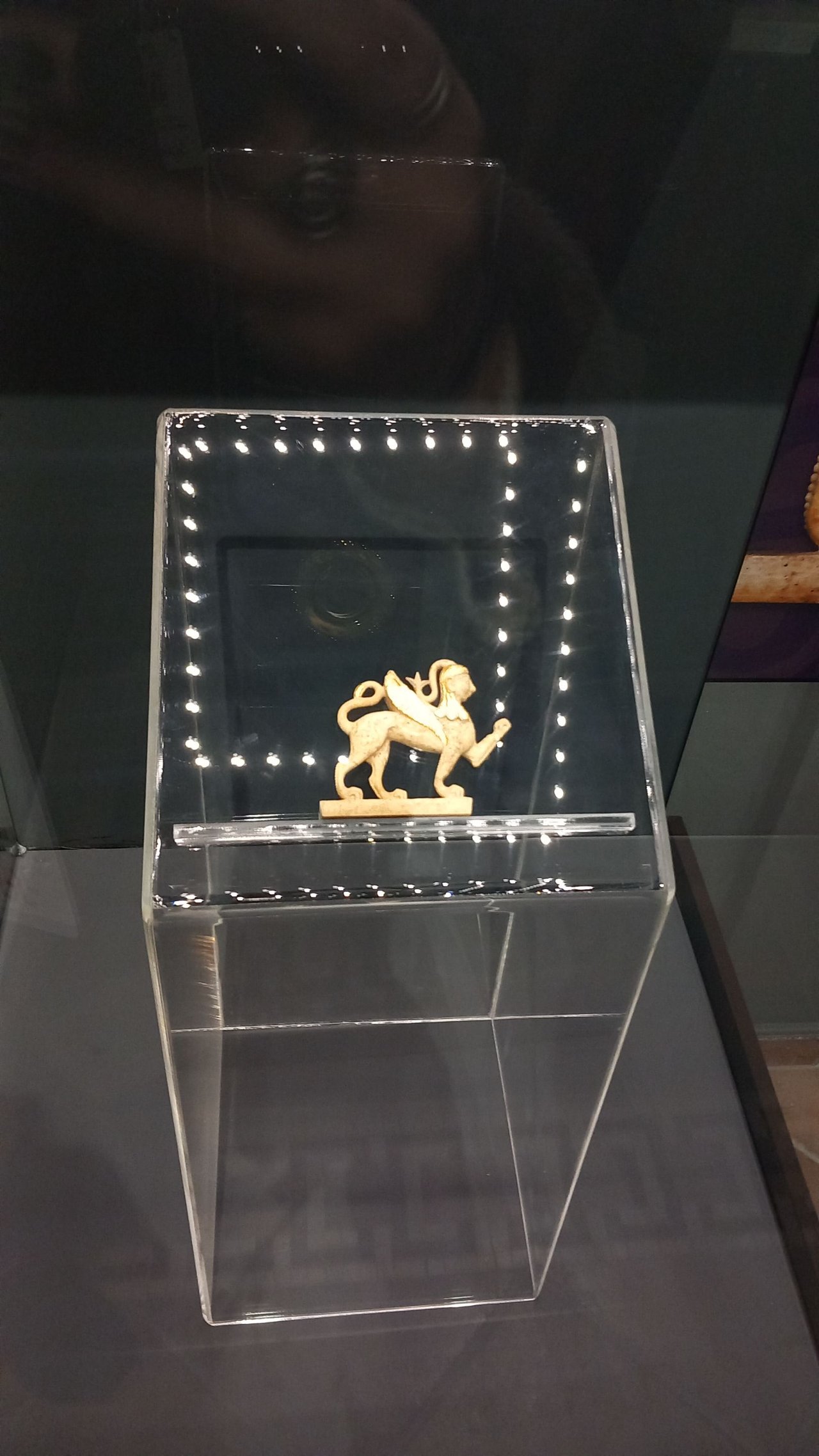
This Sphinx may be one of my most treasured artefacts. Let me give you a little summary. The carvings of this Sphinx are on both sides, but the gold engravings on one side are more detailed, which emphasises that it could be a chair or a throne. It is also thought to be at the end of the chair because there is no connection point at the top. Of course, all of this is just a train of thought because there is nothing to prove it.

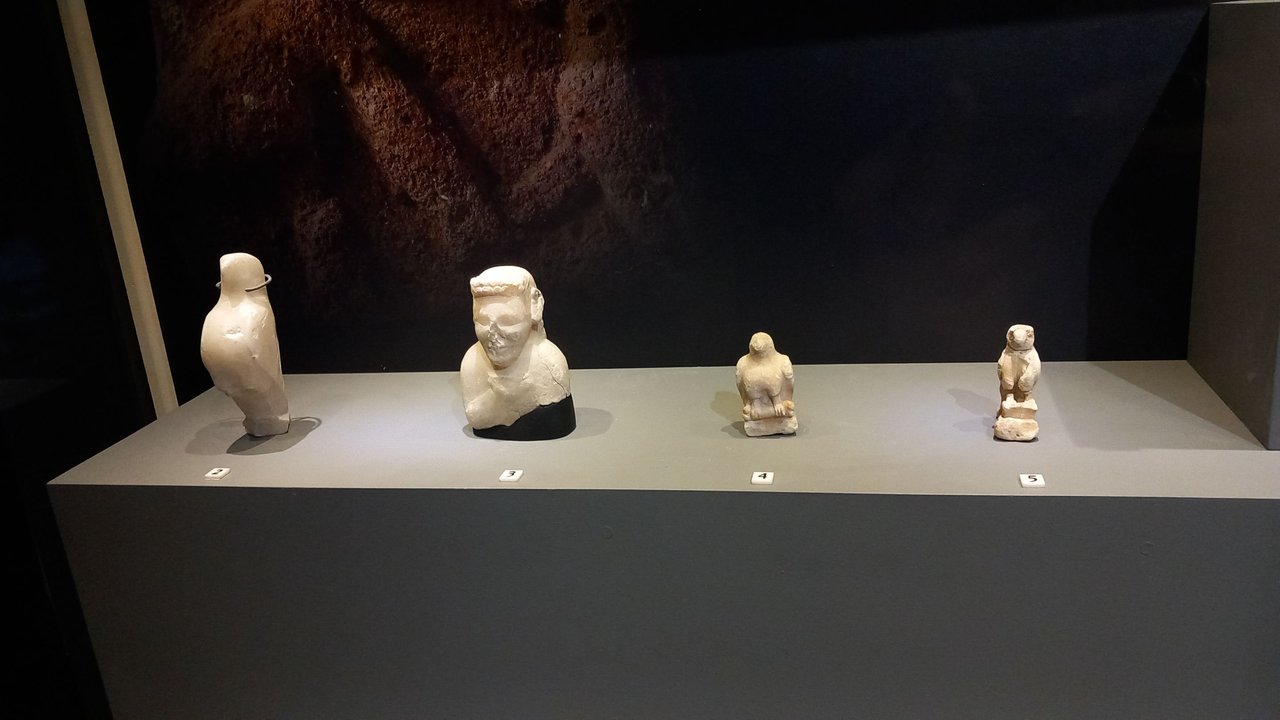
Would you look at these figurines made of marble? To be even a little more specific, these figurines are made of water marble. The fact that their colours were so beautiful and clean was what attracted my attention the most. Especially the hawk figurine number 2 attracted my attention the most because although we can't see the whole head of the hawk, doesn't it look like the chest of the hawk is quite swollen?
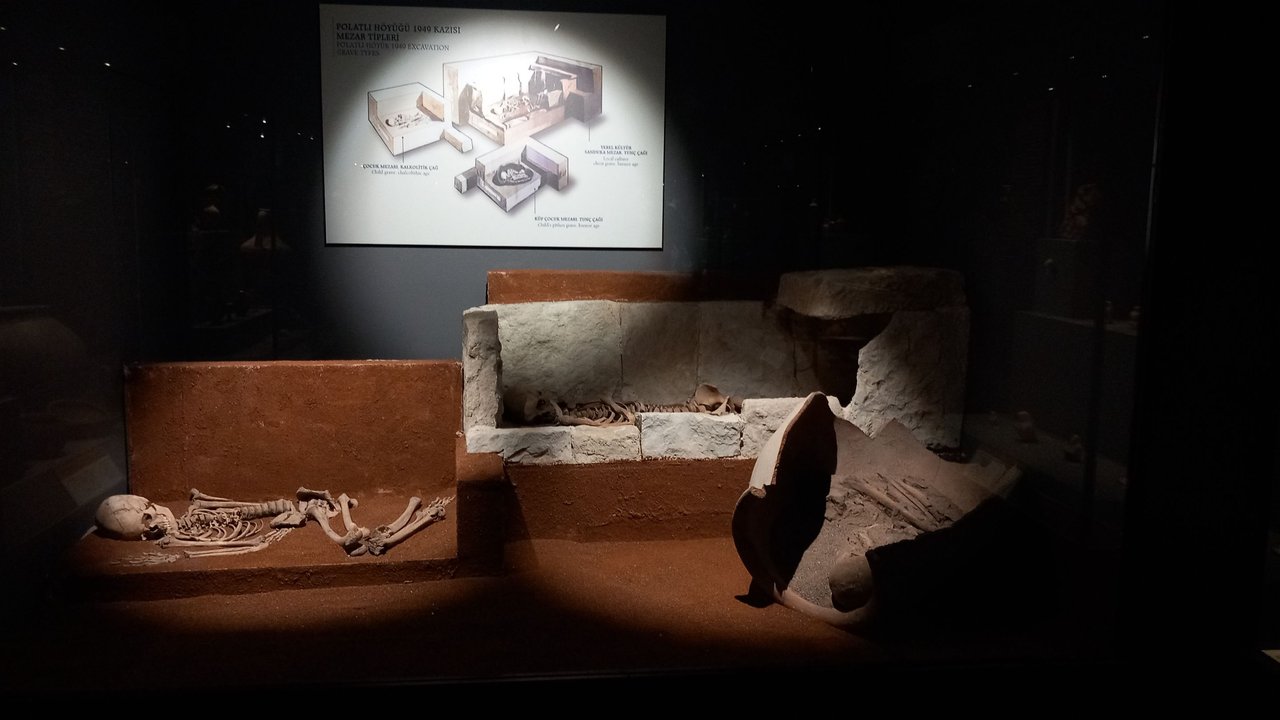
Here, the graves from the excavation carried out in 1949 are exhibited. These people buried in the foetal position are actually reminiscent of the womb. Thanks to today's and recent knowledge, we know that a baby is in this position in the womb, but in a period before Christ, I am talking about more than 2000 years ago, how did they know this? What did they do to find out, or was this something that was done without looking for any reason behind it?

I would like to talk to you a little bit about wines. It would be impossible for a society so fond of art not to like wine, wouldn't it? These earthenware and clay amphorae, which carried drinks and rare provisions brought from Western Anatolia and the Aegean Islands before the Hellenistic Period, were used until the 2nd century BC. Of course, the sizes of these amphorae are quite variable. I guess it depends on who, where and what they were carrying.

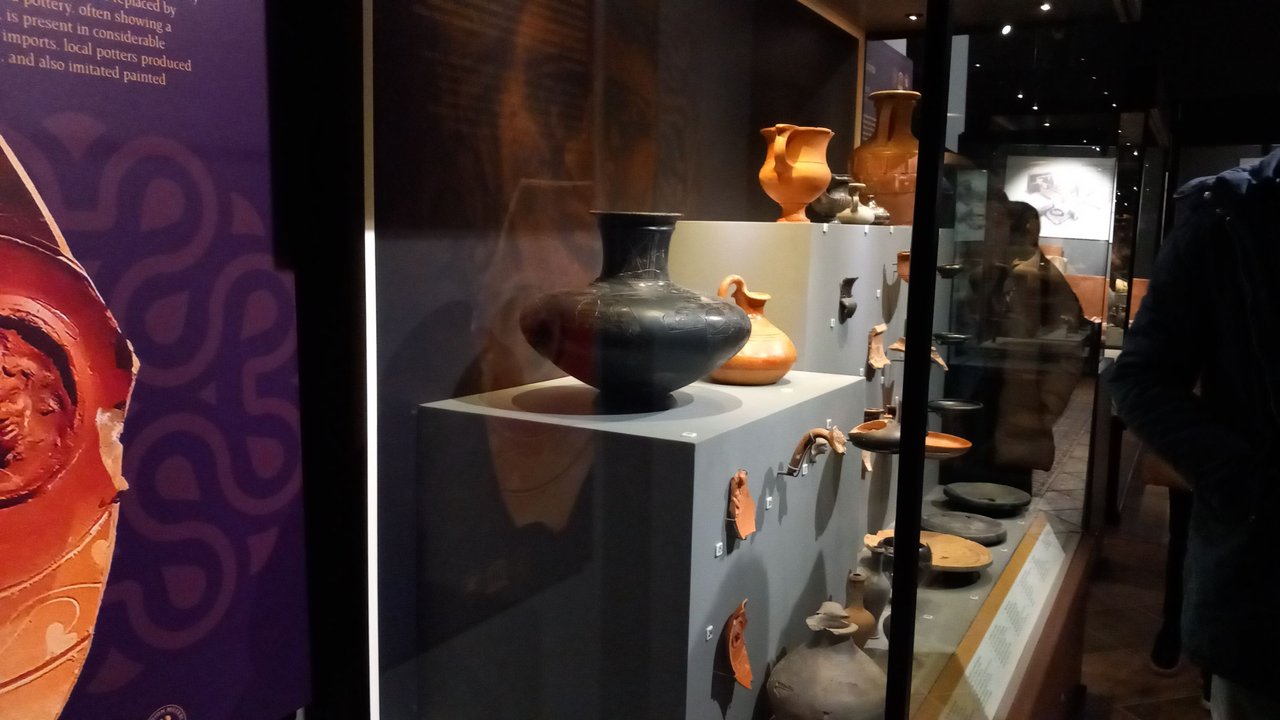
Towards the end, we are moving towards the Hellenistic Period, getting a little closer to the present day. Unfortunately, Phrygian pottery loses its originality in this period and gives way to more Greek-style embroideries. In fact, while the Phrygians had their own unique styles, it is quite sad that they sacrificed their identity for the sake of a ‘fashion trend’.


Now we come to the period of Alexander the Great. More precisely the Roman Period. (I hope you got the joke 😂) With the destructive raids of the Romans, the Phrygian people were forced to migrate and those who did not go had a hard time under Roman rule. Here, of course, it should not be forgotten that they took precious stones, mines and especially women.
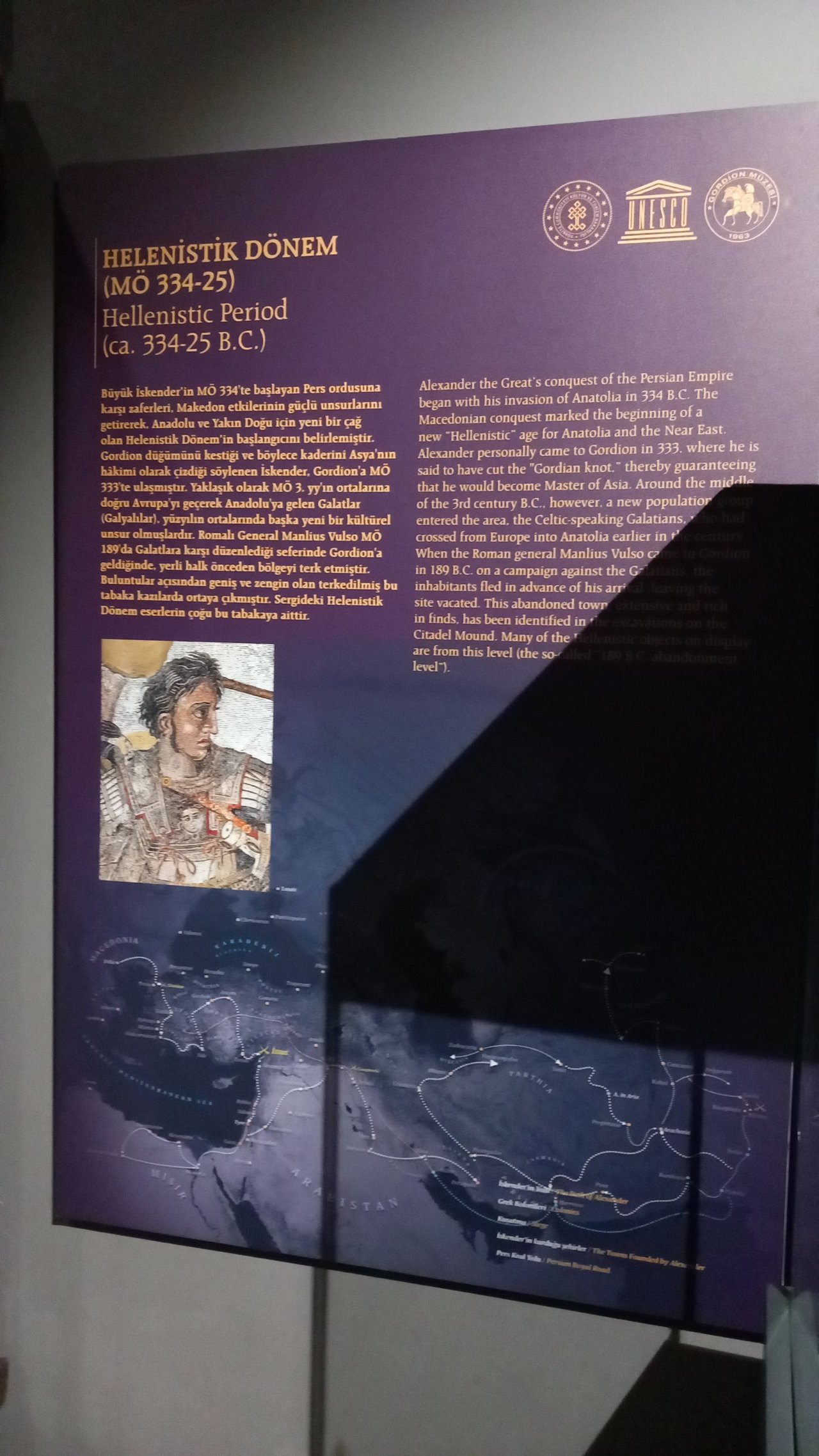
On the information board here you are given a small paragraph about the period. It talks about Alexander the Great's plan and that the knot was actually the end. Of course, these are my words because the way they expressed it is a little different. I recommend you to take at least 1 minute to read it.



As the last part, we are going out with you because we have come to the end of our museum visit. There is a mosaic made of pebbles here. I think I've talked before about the coloured pebbles being brought from different regions. I'm not sure if it's the same here.

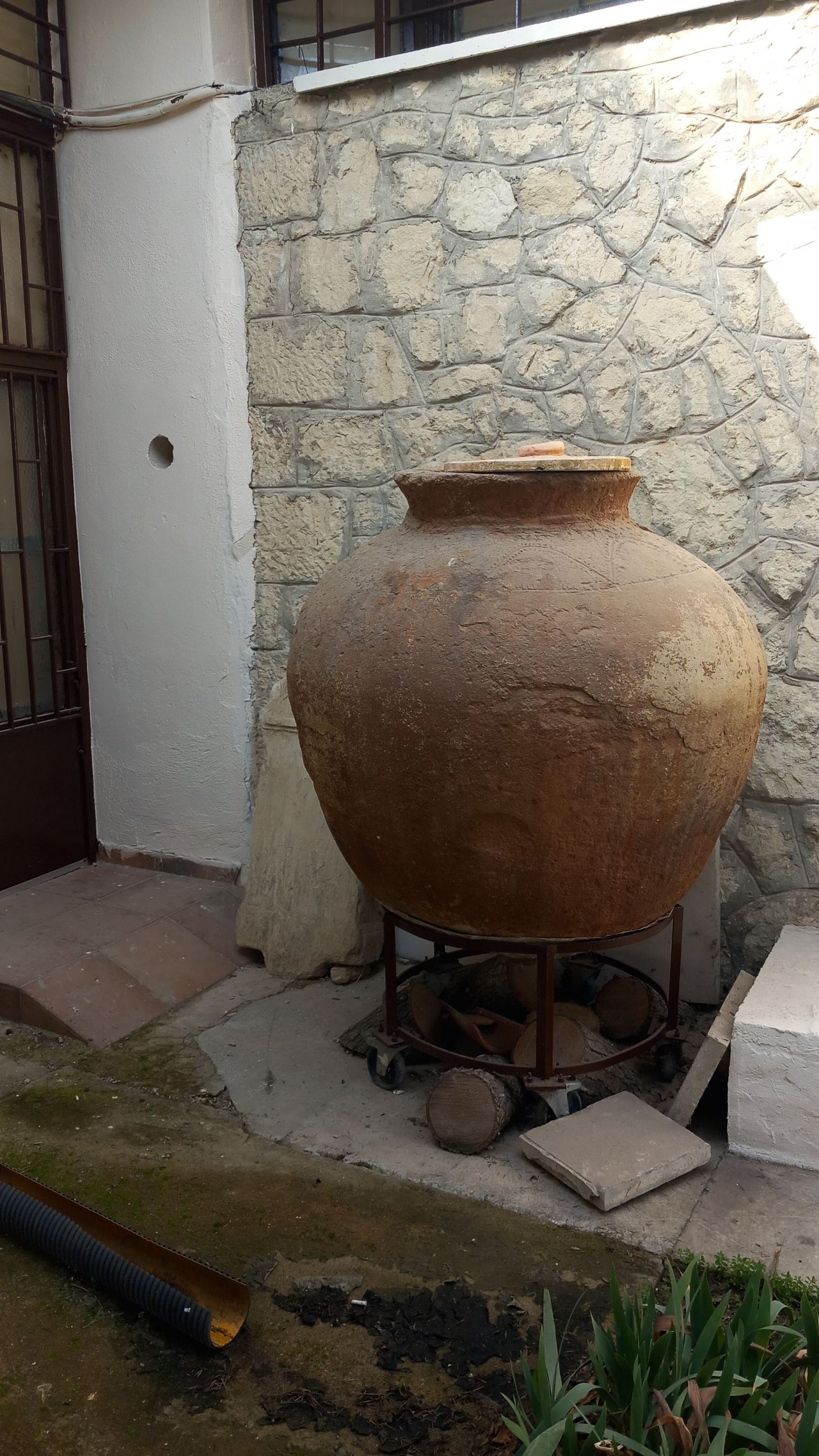
I think by now you know what I think about the artefacts that are out there. It's not a safe area because you can't control people's hands or legs.


Finally, I would like to show you the area I mentioned in my previous blog. it's in the middle of nowhere and it's deserted. There are no buildings anywhere. There are only hills with mounds.

It's also a bit scary as there's still a long way to go. Anyway. I hope what I told you didn't bore you because this post was much longer than I thought, but that's okay. It was an article I wrote by having fun and remembering a little bit. See you at our next stop. Take care of yourself, stay with health and love and please remember that;
You are the only one of you.


Herkese merhabaaa!!
Umarım iyisinizdir ya da iyi olmaya çalışıyorsunuzdur. Ben iyiyim. Son zamanlarda düzenimden epey uzaklaşmış durumdayım ve bunu değiştirmeye geldim. Bu yüzden de biraz eski rutinimiz olan pazartesi günleri Türkiye'nin Dört Bir Yanından serimize devam edeceğiz. Harika bir başlangıç olabilir değil mi?

Türkiye gezimizin otuz üçüncü bölümünde Gordion'a gitmiştik. Hani şu Büyük İskender'in Gordion düğümünü kestiği yere. Şimdi ise Midas Tümülüsü'nün hemen karşısında bulunan ve Yassıhöyük'te keşfedilen tarihi eserlerin ve daha nicesinin bulunduğu bu müzeye giriyoruz.





Müzenin girişi oldukça sakin gibi görünüyor. Dışarıda hava koşullarından kolay bir şekilde etkilenmeyecek birkaç sunak taşı ve mermer lahit bulunuyor. Aslında bence bunların da dışarıda olmaması gerekiyor ama tabii ki de bir şey söylemek ne yazık ki bana düşmüyor. Burada bana düşen tek şey bu tarihi miraslar adına üzülmek çünkü biliyoruz ki Ankara o kadar da iyi hava koşullarına sahip bir yer değil.

Müze, Gordion'un bulunduğu alanın kronolojik bir çizelgesini yapmış, müze içerisinde de bu şekilde düzenlenmiş. Ayrıca benzer zamanlara ait yakın yerlerde bulunan ama görterimi yapılmayan eserleri de burada bize sunuyorlar. Bu yüzden müzede küçük ama detaylı şeyler çok fazla sayıda bulunuyor.

Burada da Büyük İskender'in atı ile olan bu mozaiğinin bir kopyası da burada bulunuyor fakat bence bu mozaiğin, en azından bir kopyasının, bulunması gerekiyor. Sonuçta İskender'in bıraktığı izler silinesi kolay izler değiller.
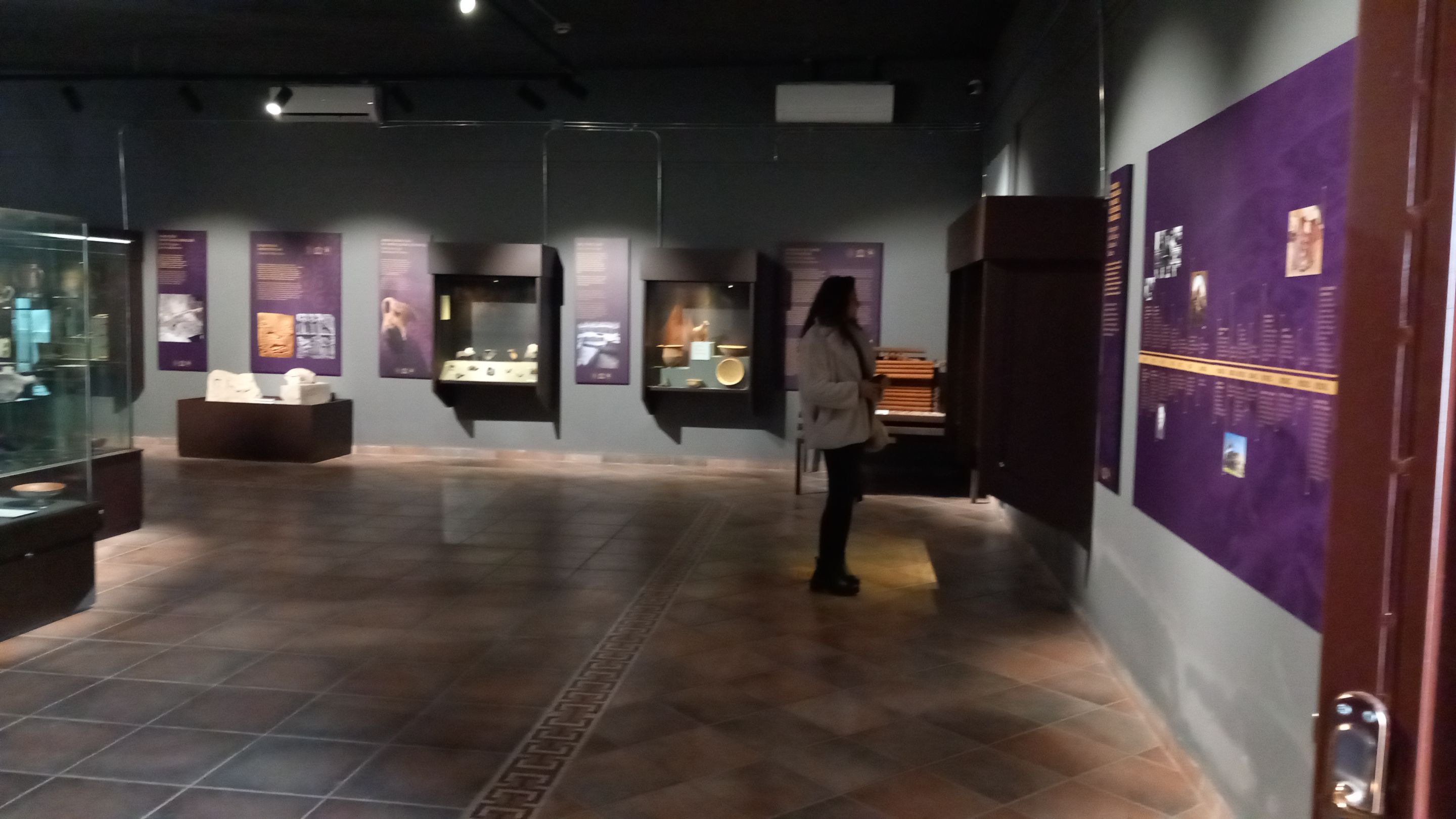
Müze oldukça temiz bir şekilde işlenmiş. Karışıklığa yol açan şeyler bulunmuyor ve her bir parçayı tek tek anlamakta zorluk çekmiyorsunuz. Hatta, aşağıya daha yakın bir fotoğrafını koyacağım, ilk girdiğiniz odada kronoljik tablo bulunuyor.


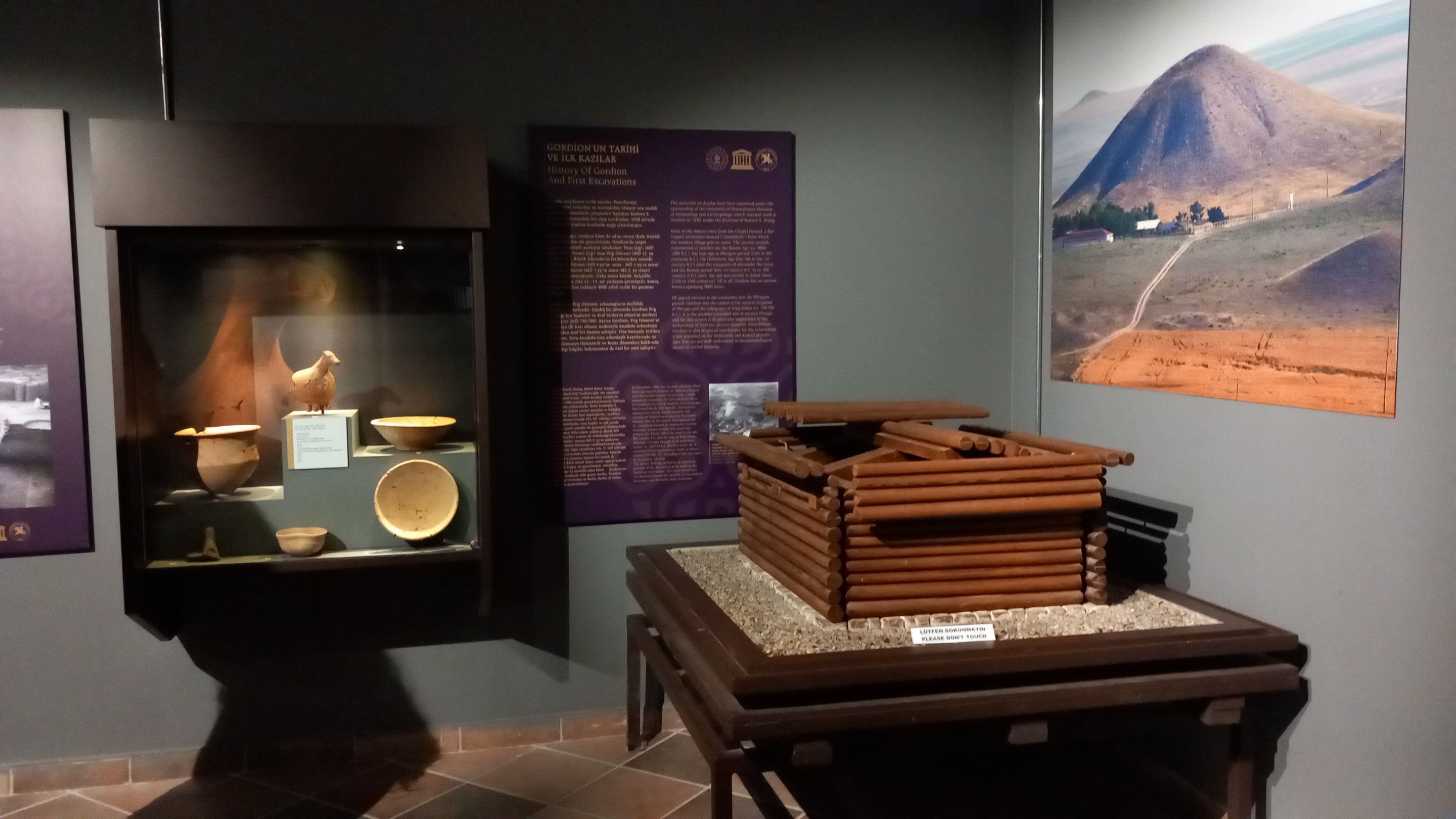
Kazıların nasıl ve nerede başladığına dair yazılar da bulunuyor ve her şey detaylı bir şekilde belgelendirildiği için oldukça da gerçekçiler. Bu yazıları okurken birilerinin bir hikâyeyi yazmış olmalarını görmekten ziyade gerçekten ne olduğunu okuyor gibisiniz.

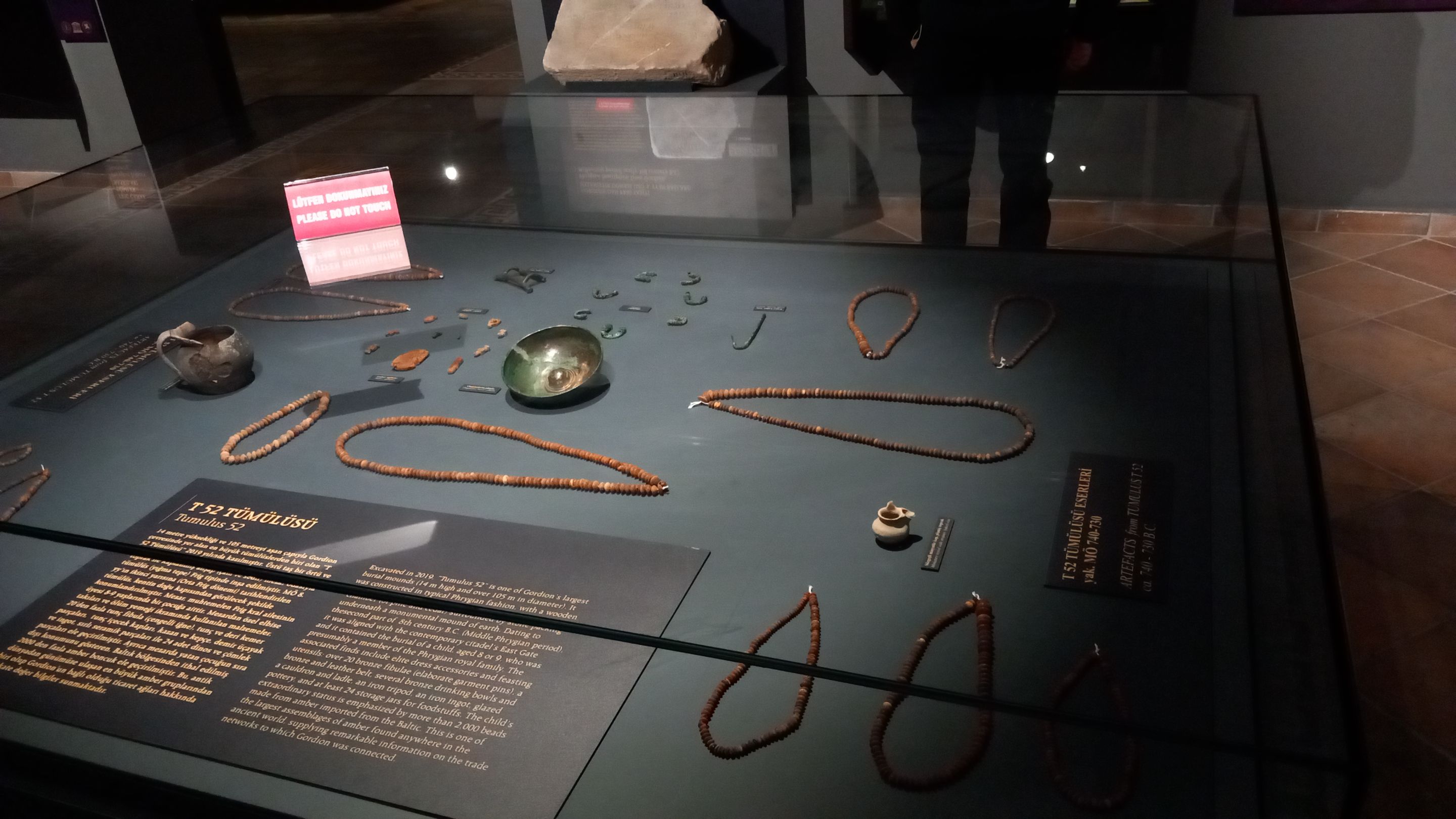
Cam ile korunan eserlerde fotoğraf çekmekte zorlansam da bazen fotoğraflar çok güzel göründü. Aynı sağ taraftaki fotoğraf gibi. Sebebini anlayamadığım bir şekilde bu fotoğrafı çok sevdim. Burada, bir önceki yazımda bahsettiğim, 100'e yakın tümülüsten elli ikincisinin içinde bulunan eşyalar sergileniyor.

Fotoğrafın sağ tarafında bulunan bilgilendirme panosundan da okuyabileceğiniz gibi burada Erken Frig döneminden demir araç gereçler bulunuyor. Aslında benim Frigler ile ilgili hoşuma giden bir ya da iki şey var. Fibula ve flütler. Kendi kişiliğimle bağdaştırdığımdan olsa gerek Frigleri pek bir severim.


Oda değiştirdiğinizi renklerden ve içerikten anlamak oldukça kolay. Şimdi bile müzeyi çok net bir şekilde hatırlayamasam bile çevredeki eserler ve renk temaları ile birlikte farklı bir odada olduğumu düşünmek hiç de zor değil. Planlanması ve ortaya konması oldukça başarılı olmuş.
M.Ö 800'lerde gerçekleşen büyük bir yangından dolayı bu kısımda bulunan evlerdeki her şey aynı kalmış. Kimse gelip de kalanları toplamamış anlaşılan çünkü eğer fotoğrafa dikkatli bir şekilde bakarsanız eğer buradaki eserlerin diğerlerine göre biraz daha "sağlam" olduğunu rahatlıkla görebilirsiniz.

Size daha önce Friglerin mimaride de harika olduklarını söylemiş miydim? Söylemediysem de şimdi söylüyorum çünkü Terrakottalara bakabilir misiniz? M.Ö 6. yüzyıl gibi bir zamandan bahsediyoruz ve mimari sanat eserlerinin bu minik örnekleri bile bir noktada bize bir evin ya da yönetim binasının nasıl görünebileceği hakkında fikir veriyor.

İşlemeler gözbebeği gibi. Oldukça detaylı ve dönemini yansıtıyor. Keşke bu eserin sağlan hâline ulaşabilseydik. Bu tarz şeyleri evimde de sevdiğimden olsa gerek alıp evime götürmek istedim. Sanırım benzer bir vazo bulsam iyi olacak.


Bu kısımdan sonra ise Erken/Orta Frig Dönemi'ne ait bölüme ilerliyoruz. Araç gereçler o meşhur Frig izlerini yavaş yavaş kaybetseler de bana göre, teknoloji ilerledikçe daha farklı şeyler görmeye başlıyoruz. Bir yaban domuzunun dişlerini tunç ile tamir etmek ne demek sizce? Neden böyle bir şey yapma ihtiyacı duyarsın? Günlük bir alet olarak mı kullanılmıştır sizce yoksa bir süs eşyası olarak mı?


Bu Sfenks benim için en değerli eserlerden biri olabilir. Size minik bir özet geçeyim. Bu Sfenks'in oymaları iki yüzünde de var fakat bir tarafındaki altın işlemeler daha detaylı bu da bir sandalye ya da taht işlemesi olabileceği vurgusunu yapıyor. Ayrıca üst kısmında bir bağlantı yeri olmadığından dolayı sandalyenin uç kısmında olduğu da düşünülmüş. Tabii bunların hepsi sadece bir düşünce treni çünkü bunları kanıtlayan bir şeye sahip değiller.
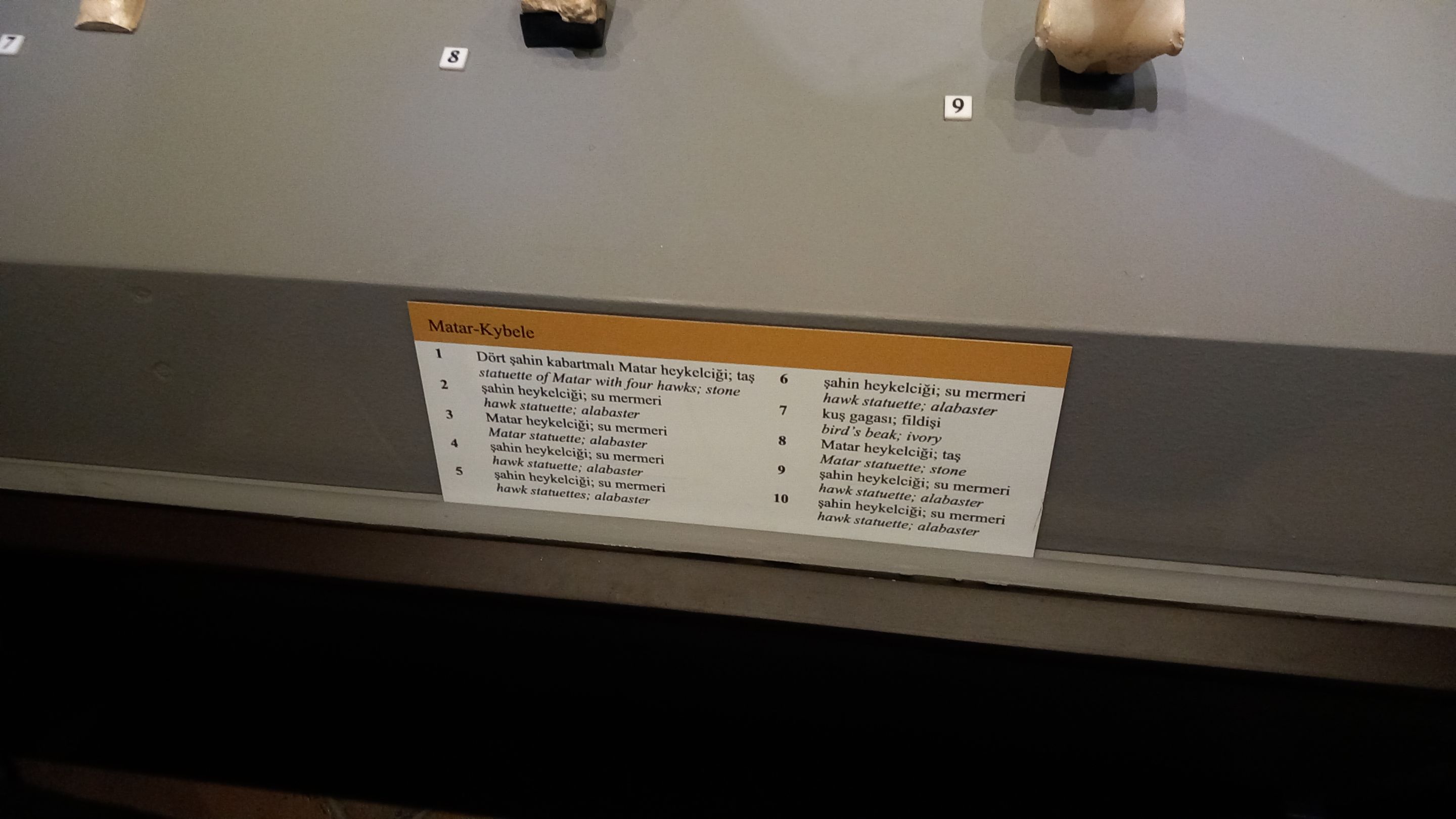

Mermerden yapılmış bu heykelciklere bakar mısınız? Hatta biraz daha spesifik olmak gerekirse su mermerinden yapılmış olan bu heykelcikler. Renklerinin bu kadar güzel ve temiz olması benim en çok dikkatimi çeken şeydi. Özellikle 2 numaralı şahin heykelciği en çok ilgimi çekendi çünkü her ne kadar kafasının tamamını göremesek de şahinin göğsü oldukça şişmiş gibi gelmedi mi size de?

Burada ise 1949 yılında yapılan kazıdan çıkan mezarlar sergileniyor. Cenin pozisyonunda gömülmüş bu insanlar aslında anne karnını anımsatıyor. Günümüz ve yakın geçmişteki bilgiler sayesinde biz bir bebeğin anne karnında bu pozisyonda durduğunu biliyoruz fakat milattan önceki bir dönemde, 2000 yıldan fazla bir süreden bahsediyorum burada, bunu nasıl biliyorlardı? Neler yapmışlardı bunu öğrenebilmek için ya da bu ardında hiçbir sebep aranmadan yapılmış bir şey miydi?

Biraz sizinle şaraplar hakkında konuşmak isiyorum. Sanata bu kadar düşkün bir topluluğun şarap sevmemesi imkânsız olur değil mi? Hellenistik Dönem öncesi Batı Anadolu ve Ege Adaları'ndan getirilen içeçekler ve nadir erzakların taşındığı bu topraktan ve kilden amforalar M.Ö 2. yüzyıla kadar kullanılmışlar. Tabii bu amfoların boyutları oldukça değişken. Bu da sanırım kime, hangi mevkiye ve ne taşıdıklarına göre değişkenlik gösteriyor.


Sizinle sonlara doğru günümüze çok az daha yaklaşarak Hellenistik Dönem'e ilerliyoruz. Frig çömlekçiliği ne yazık ki bu dönemde özgünlüğünü kaybederek daha çok Yunan tarzı işlemelere yerini bırakıyor. Aslında Friglerin de kendine özgün tarzları varken bir "moda akımı" uğruna kendi kimliklerinden feragât etmeleri oldukça üzücü.


Şimdi ise sizlerle Büyük İskender Dönemi'ne geliyoruz. Daha doğrusu Roma Dönemi. Bu biraz yıkıcı bir süreçmiş. (Şakayı anlamışsınızdır umarım 😂) Romalıların yaptıkları yıkıcı akınlar ile Frig halkı göçe zorlanmış ve gitmeyenler ise Roma hakimiyeti altında zor zamanlar yaşamışlar. Burada tabii değerli taşları, madenleri ve özellikle kadınları aldıklarını da unutmamak gerekiyor.

Buradaki bilgilendirme panosunda size dönem ile ilgili minik bir paragraf verilmiş. Büyük İskender'in planından ve düğümün aslında sonu olduğundan bahsediliyor. Tabii bunlar benim kelimelerim çünkü onların dile getiriş şekli biraz farklı. En azından 1 dakikanızı ayırarak okumanızı tavsiye ederim.


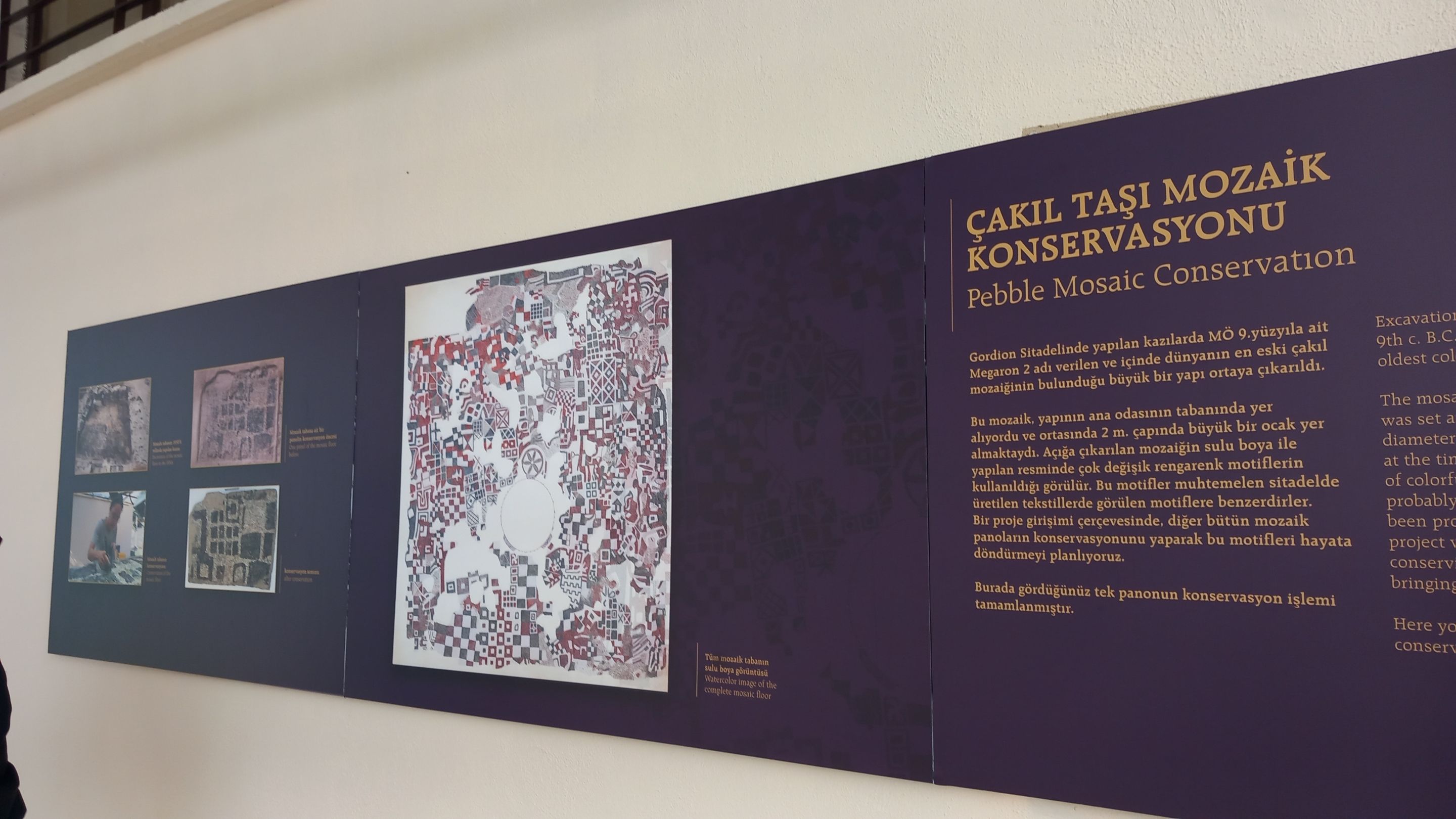
Son kısım olarak ise sizinle dışarı çıkıyoruz çünkü müze gezimizin sonuna geldik. Burada çakıl taşından yapılma bir mozaik bulunuyor. Renkli çakılların farklı bölgelerden getirildiği hakkında sanırım daha önce konuşmuştum. Burada durum aynı mı emin değilim.
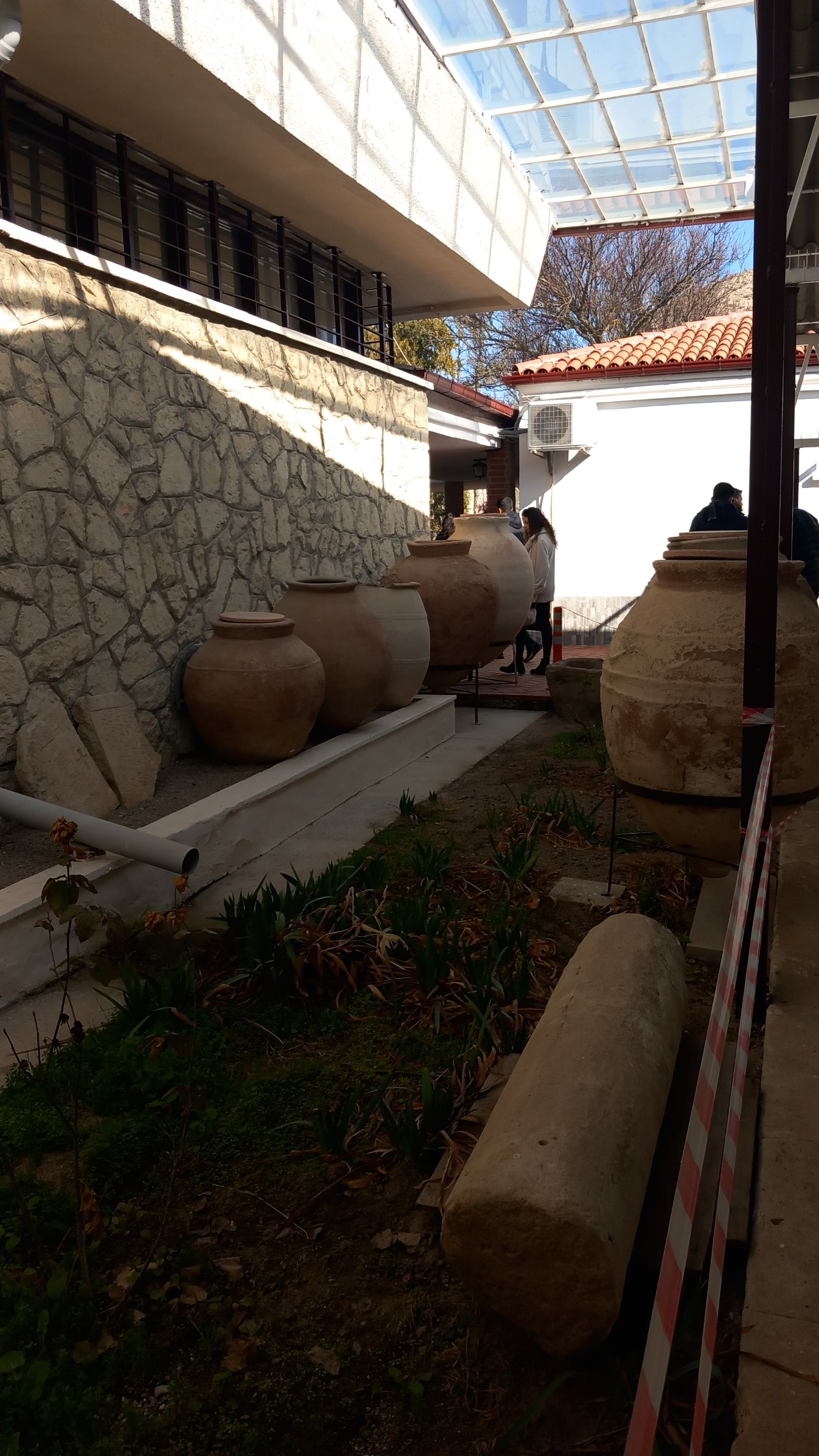

Şu zamana kadar dışarıda olan eserler hakkında neler düşündüğümü anlamışsınızdır diye düşünüyorum. İnsanların elini veya bacaklarını kontrol edemediğinizden dolayı hiç de güvenli bir alan değil.

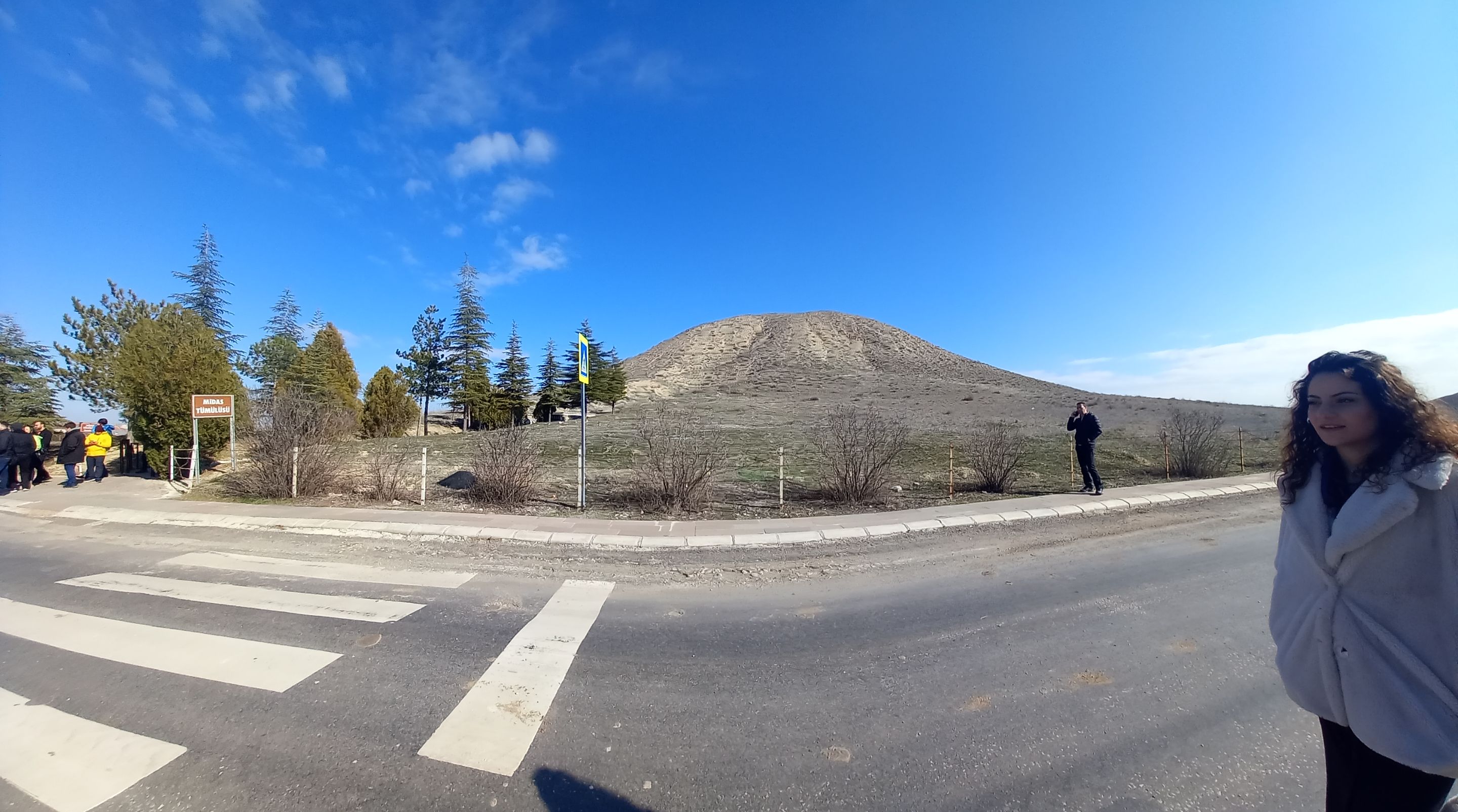
Son olarak ise size bir önceki yazımda bahsettiğim alanı göstermek istiyorum. Burası bir hiçliğin ortasında ve ıssız. Hiçbir yerde bina yok. Sadece tümülüs olan tepeler bulunuyor.
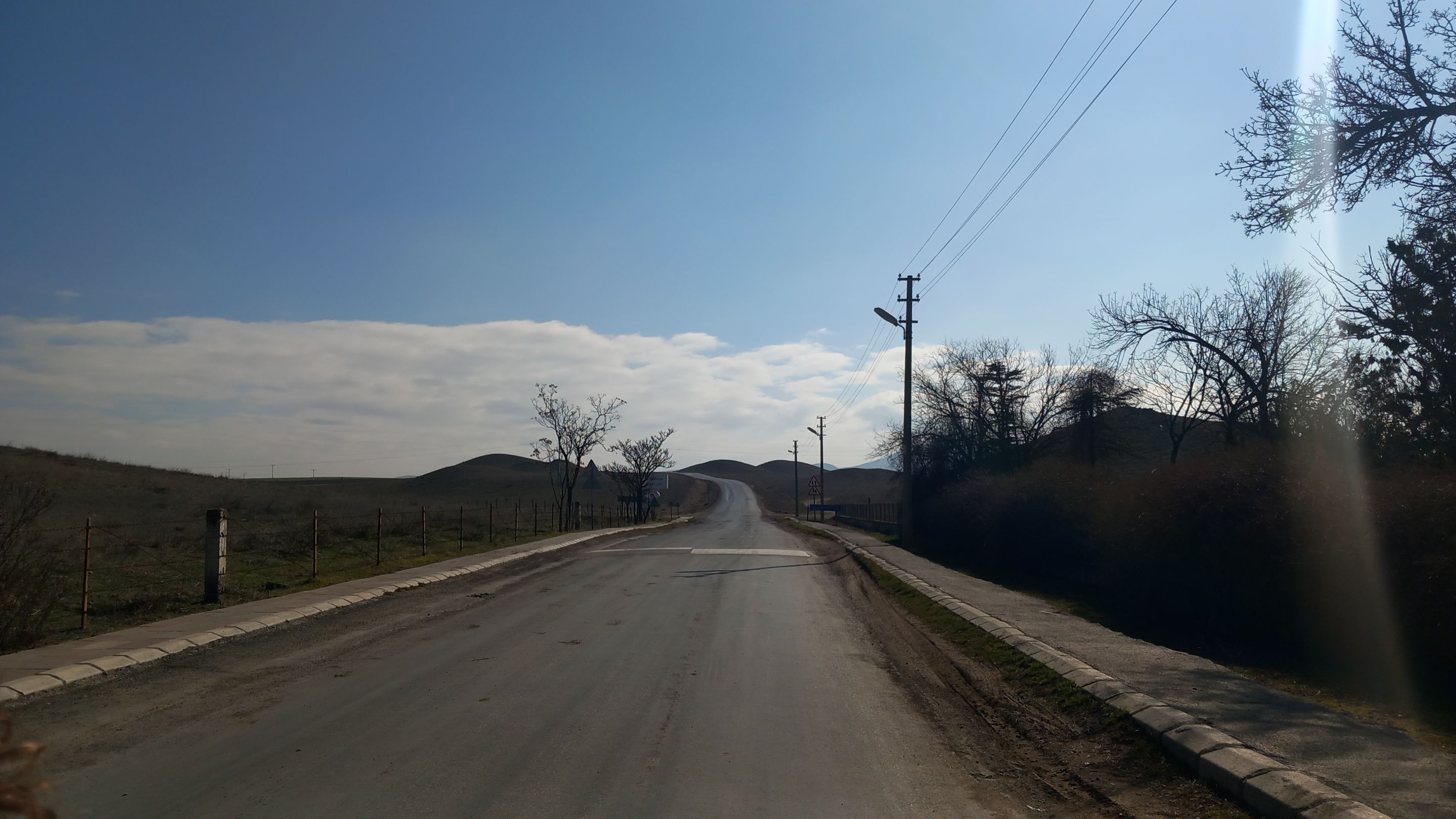
Önümüzde daha çok yol bulunduğundan dolayı da biraz korkutucu aynı zamanda. Neyse. Size anlattıklarım umarım canınızı sıkmamıştır çünkü bu yazı düşündüğümden çok daha uzun oldu ama olsun. Eğlenerek ve biraz da hatırlayarak yazdığım bir yazı oldu. Bir sonraki durağımızda görüşmek üzere. Kendinize dikkat edin, sağlık ve sevgiyle kalın ve lütfen unutmayın ki;
Bu dünyada sizden başka bir tane daha yok.

Previous Chapters
From All Over Turkiye 33 / Tükiye'nin Dört Bir Yanından 33
From All Over Turkiye 32 / Türkiye'nin Dört Bir Yanından 32
From All Over Turkiye 31 / Türkiye'nin Dört Bir Yanından 31
From All Over Turkiye 30 / Türkiye'nin Dört Bir Yanından 30
From All Over Türkiye 29 / Türkiye'nin Dört Bir Yanından 29
From All Over Türkiye 28 / Türkiye'nin Dört Bir Yanından 28
From All Over Turkiye 27 / Türkiye'nin Dört Bir Yanından 27
From All Over Turkiye 26 / Türkiye'nin Dört Bir Yanından 26
From All Over Turkiye 25 / Türkiye'nin Dört Bir Yanından 25
From All Over Turkiye 24 / Türkiye'nin Dört Bir Yanından 24
All of my content is written in Turkish first and then with the help of translators and dictionaries below translated in English.
https://www.seslisozluk.net
https://www.deepl.com/translator
P.S. If you know English AND Turkish, I do that too... If you see a translation discrepancy that was on purpose. I did think this is as proper as I could do. Because there are many differences between these languages.
Not: Hem Türkçe hem de İngilizce biliyorsanız, ben de biliyorum... Eğer çeviri farklılığı görürseniz bunun bilinçli olduğunu bilin lütfen. Bunu yapabileceğim en uygun şekilde yaptığımı düşünüyorum. Çünkü bu iki dil arasında çok fazla fark var.